The Maginot Line
Tourism, holidays & weekends guide in the moselle.
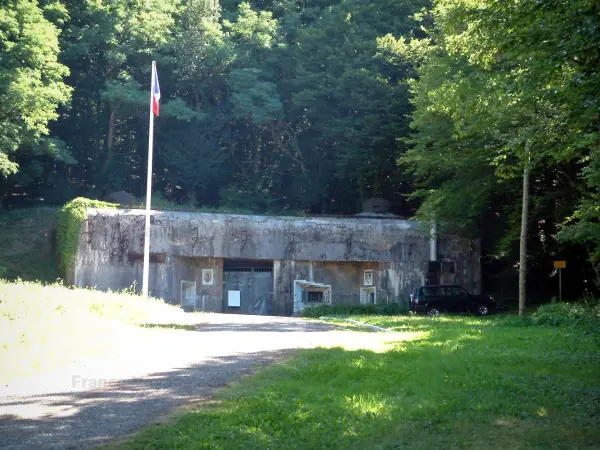
Made up of 58 structures, the Maginot Line is a line of fortifications built by France between 1929 and 1940 along its 750 kilometres of borders from Belgium to Italy, crossing areas including Alsace from north to south for nearly 200 kilometres. Built to counter foreign military invasions, it consists of many concrete blocks topped with domes or metal gun turrets. Its cloak of military secrecy, mysterious underground installations and complex organisation make the Maginot Line particularly appealing to visitors, and it fits in naturally with the other military remembrance sites.
Spread over 160 hectares and boasting 10 kilometres of tunnels, the largest of the sites is the Hackenberg Fortress in Veckring , which can be toured aboard a vintage electric train. Outside are a pedestrian circuit and an anti-tank wall, unique in the region.
Other highlights include Fort Schoenenbourg in Hunspach, also one of the largest structures and open to visitors since 1978. Securing the north of Alsace, it saw more combat than any other Maginot Line structure during the Second World War, with more than 17,000 shells fired in 10 months. Further sites to see are the Four-à-Chaux Fortress in Lembach , a listed Historic Monument that still has all its original equipment; and the Simserhof Fortress, a few kilometres from Bitche , which visitors can tour aboard automated vehicles.
The Maginot Line Path, which is 71 kilometres long, is a great way to discover the fortresses as well as some typical villages.

Visit ideas nearby
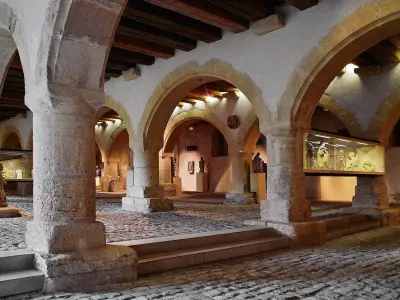
Related articles The Maginot Line
Maginot Line: Visit France's Famous Line That Failed to Hold
While the Maginot Line may have quickly have been breached, it was very impressive and many of its forts are open to the public today.
The Maginot Line was a very impressive network of fortifications and defensive structures. Many of these still exist and there many of the forts and bunkers can be visited today. Many of these are lost in the countryside and the French woods, others are paid museums.
After the fall of France, it was dark days over the English Channel in London as well. Today one can visit the Churchill War Rooms where Prime Minister Churchill lived underground during the war and that served as the nerve center of the British war effort. Berlin too was once a maze of around 1,000 bunkers - some of which one can tour today .
What To Know Of the French Maginot Line
As with many things in history, myths and misconceptions tend to grow up. According to Timeghost (it's worth watching their very informative documentary too), the Maginot Line did not terminate at the hilly Ardennes (it was just weaker there), parts will still under construction at the time of the invasion, and it was never meant to stop an invasion - just buy time so that the army had time to respond.
In its function, the Maginot Line was actually serving its function, but it was also hit at a surprised and weak spot coupled with disastrous problems in Allied command.
The Magino Line was made up of 58 structures and was built between 1929 and 1940.
- Length: 750 Kilometers From Belgium to Italy (Strongest In Alsace and Lorraine)
- Structures: 58 Structures
- Purpose: Counter Foreign Military Invasions
It was made up of many concrete blocks that were topped with domes or metal gun turrets.
- Built: Between 1929 and 1940
Related: What You Should Know About The Congressional Fallout Shelter
Fort de Schoenenbourg
In the French department of Alsace is the unforgettable Fort de Schoenenbourg. This fort was the most important Maginot Line fortification in Alsace and is included on the National Register of Historic Places.
- Important: It Was the Most Important Maginot Line Fortification in Alsace
It has tunnels 30 meters underground stretching for 3 kilometers. It is the perfect place to understand the operations of a large ouvrage of the Maginot Line built to protect France from German attack.
It is comprised of 8 blocks to accommodate 650 men. On the tour, one can see the barracks, the kitchens, the command post, the generating plant, see gun positions, retractable gun turrets, magazines for the ammunition.
Also on display are various documents on the history of the Maginot Line as well as the military life of those who manned it. Tours are offered in French, German, and English.
- Adult rate: 9€ ($10)
- Child rate: 5€ ($6)
Related: Nuclear Fallout Bunker: England's Biggest & Deepest Open Bunker
Hackenberg Fortress In Veckring
The Hackenberg Fortress is the largest of the sites along the Maginot Line and can be toured aboard their vintage electric train. Outside the fort, there is a pedestrian circuit as well as an anti-tank wall (something unique to the region).
- Vintage Train: Explore The Tunnels In A Vintage Electric Train
When planning the trip, the tour of the fort takes around 2 hours and is completely underground. Remember to bring something warm even in the height of summer as the temperature is a steady 12° C or 54°F all year.
- Souvenir Shop: There Is Also a Souvenir Shop At The End of the Visit
A souvenir shop is offered at the end of the visit.
- Adult: 14€ ($15)
- Child: 6€ ($7) - Aged Under 16 Years of Age
The tour is guided by volunteers and is a chance to travel back in time to discover the underground world that the French were betting on to save them from a German invasion.
Not only will one ride in their historic electric train but one will also witness their operation 135 mm gun turret and more.
Tours are only provided in guided groups.
- Duration: 2-2.5 Hours
Tours and hours vary seasonally and English language tours are provided most days subject to guide availability. Book in advance to ensure an English tour.
Four-à-Chaux Fortress
Four-à-Chaux Fortress is another notable Maginot fortress and is in Lembach in France. It still has all its original equipment. It was designed to defend the Valley of the Sauer and was built on high ground dominating the village of Lembach.
Here there are 3 kilometers of galleries 30 meters below the surface. The garrison here belonged to the specialized regiment of fortress infantry. The fortress was not attacked directly in the Battle of France and held out until the armistice.
- Garrison: 24 Officers and 600 Men
Visitors see the living conditions of the garrison as well as their dormitories, sanitary arrangement, kitchens, and their in-house hospital. After it surrendered to the Germans, the German army took everything of use in order to build the formidable Atlantic Wall (that also ultimately failed to prevent the Allied landings at Normandy).
- Adult: 8.00 € ($9)
- Student : 6.00 € ($7)
Next: What You Need to Know About Visiting The D-Day Normandy Landings At Omaha Beach Today

Maginot Line in Alsace – Visit of the Schoenenbourg Fort
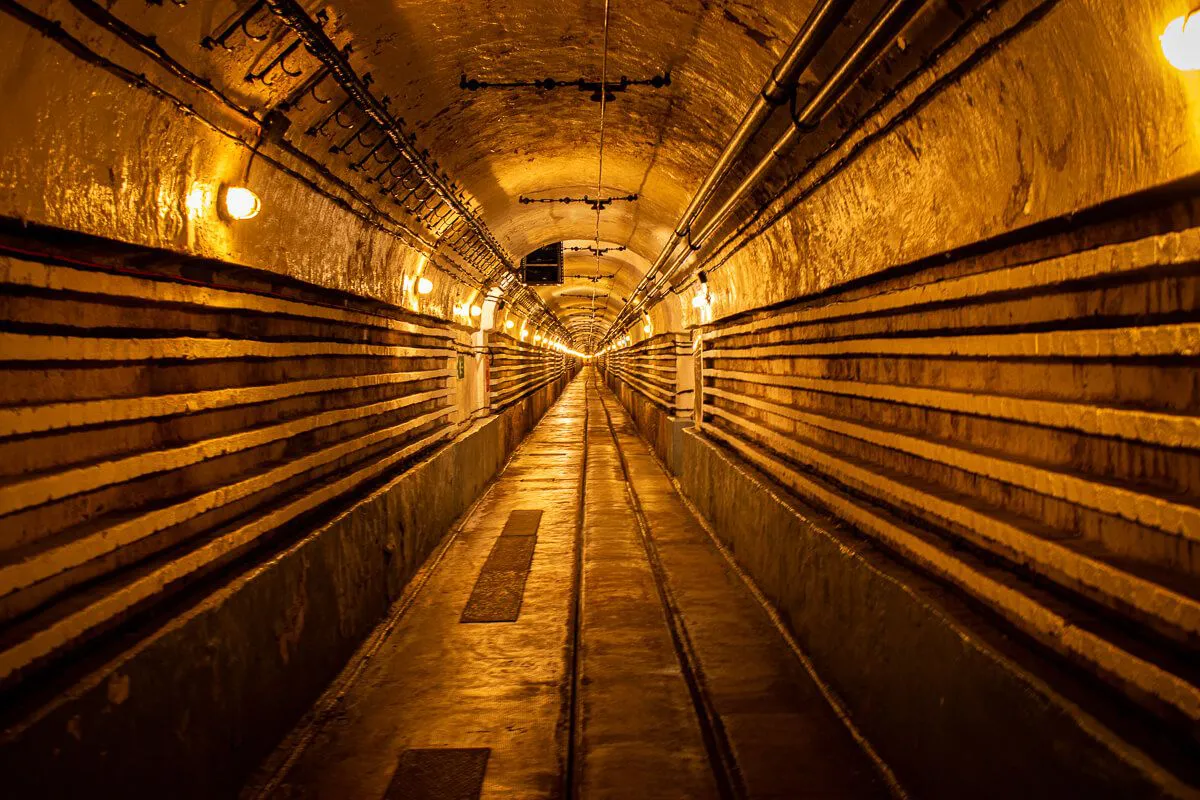
Although I grew up very far from France, visiting the Maginot Line is a childhood dream for the history buff that I am. I had no idea that I would one day be living in Alsace, the region where one of the most important works of the line is open to the public: Fort Schoenenbourg in Hunspach .
History of the Maginot Line
The schoenenbourg fort during the second world war, where to go to visit the maginot line in alsace, my photos of fort schoenenbourg in alsace, where is the maginot line located.
The Maginot Line is located along the French border with Belgium, Luxembourg, Germany, Switzerland and Italy.
Construction and role of the Maginot Line
The Maginot Line, named after the Minister of War André Maginot, is a line of fortifications built by France along its northeastern border from 1928 to 1940 and is a testament to the trauma of World War I.
We know the rest of the story. France will be quickly defeated in June 1940, and we will have to blame someone… or something! Thus, the Maginot Line is perceived by many as a useless construction.
The defensive line, however, succeeded in its mission:
- Protecting the industrial zone of Alsace and Lorraine
- To allow the mobilization of the French army.
- And most importantly: Avoiding a surprise attack by the German army on French territory!
What is the biggest fort on the Maginot Line?
The two largest forts of the Maginot Line are Fort Hackenberg in Veckring in Moselle (Lorraine) and Fort Schoenenbourg in Hunspach (Alsace).
How long is the Maginot Line?
The large works of the Maginot Line extend over 140km along the north-eastern border.
For military history enthusiasts, this fort of the Maginot Line is very important from a historical point of view. In June 1940, it was attacked not only by German artillery but also by the Luftwaffe (the air force of Nazi Germany), making it the most bombed construction on the Maginot Line . Do you remember “Big Bertha” from your World War I classes? This artillery piece also participated in the attacks against this construction!
Another interesting fact: although the armistice between France and Nazi Germany was signed on June 22, 1940, Schoenenbourg did not surrender. He was only abandoned by his troops on July 1, 1940, without having surrendered. In fact, the French high command must have told them that the war was over!
The construction was sabotaged by the Werhmacht, the armed forces of Nazi Germany, during the winter retreat of 1944-1945. It was later repaired, but the place was abandoned in 1967. Years later, in 1982, the volunteers of the Association of the Friends of the Maginot Line in Alsace began the long restoration work to bring it back to a state similar to that of 1940, when it was occupied by 630 men.
Fort Schoenenbourg, one of the biggest works of the Maginot Line!
If you have to choose only one work or museum, I advise you to visit the Fort Schoenenbourg to see the Maginot Line in Alsace. It is one of the biggest works of the Maginot Line and it is the most interesting in my opinion!
The fort received its name from the small neighboring village of Schoenenbourg and is the last large artillery fortification in northeastern France , after the Maginot Line; it is formed of casemates. You can also see some of them in the forest of Robertsau in Strasbourg.
Visit of the interior of the Schoenenbourg fort in Hunspach
A visit to the Schoenenbourg fort will take you down to 30 meters below ground . Note that an elevator is available for people with reduced mobility, who can visit about 90% of the fort!
To discover this building, it is better to like walking! This fort has 6 combat blocks, 2 entrance blocks (one for the men and one for the ammunition, through which you enter the fort) and a network of 3 km of underground galleries . One detail I particularly liked about this tour is that there is no specific itinerary to follow, you have complete freedom to visit the fort in any order you like.
The visit will allow you to get an idea of idea of how the soldiers lived underground You can even see the drawings made by the soldiers on the walls, and there is something for everyone, from Mickey Mouse to the French muse of the 1940s, Josephine Baker! Some areas have sound effects to immerse you in the 1940s atmosphere.
If you are passionate about history and architecture, a visit to the Schoenenbourg Fort is a must!
Other sites of remembrance tourism of the Maginot Line in Alsace
My favorite sites to learn more about the subject:
- Path of the Casemates of Boofzheim
- The Forts Trail
- But you can also visit: the lime kiln in Lembach , the shelter museum in Hatten, the casemate 35/3 in Marckolsheim south and the Esch casemate
- This fort is very typical of the great works of the Maginot Line: if you have to visit only one, I recommend you this one
- This fort was actually used during World War II and saw a lot of action.
- Most of the tour is accessible to everyone.
- At the entrance to the fort, you can visit a combat block (only accessible by stairs), and see how an eclipse turret works. Don’t hesitate to ask the person from the association on site if you can activate it!
I liked a little less
- Despite the ventilation systems, the atmosphere is very humid which can be difficult for people with respiratory problems like me!
- The temperature is low, remember to dress warmly.
- Use comfortable shoes! You will need at least 2 hours to visit this fort.
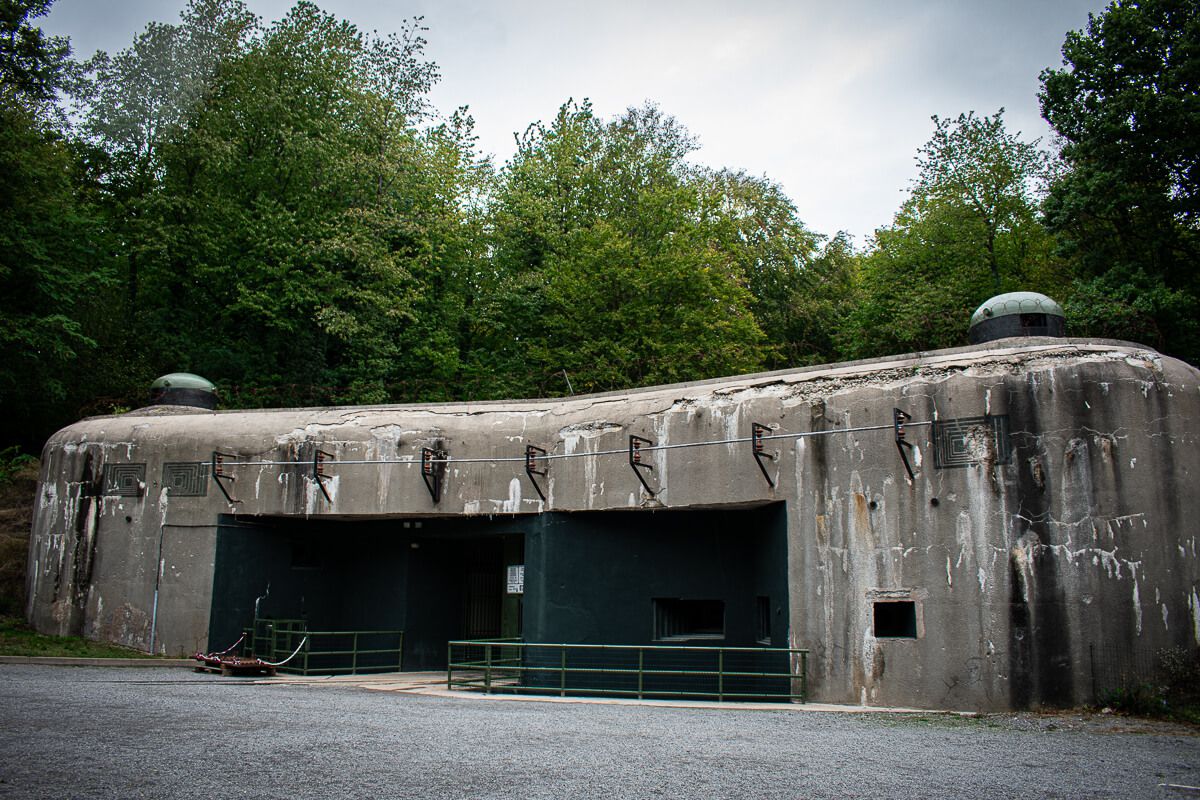
Practical information
Rates and Schedules
Buy your ticket for the visit of the Schoenenbourg Fort directly here
- 62,5 km from Strasbourg (52 minutes)
- 132 km from Colmar (1h39)
- 168 km from Mulhouse (2h10)
By public transport
The Fort is not served by public transportation.
France / Museum
Maginot Line Museum and Fort
4 Rue Commandant Martial Reynier, 67250 Hunspach, France
+333 88 80 96 19 [email protected]
Entrance ticket for guided tour of the Maginot Line at the Michelsberg

- Professional guide
- Entry/Admission - Ouvrage du Michelsberg - Ligne Maginot
- Ouvrage Michelsberg, Lorraine, Rte de Dalstein, 57320 Ébersviller, France
- Wheelchair accessible
- Stroller accessible
- Confirmation will be received at time of booking
- Most travelers can participate
- This tour/activity will have a maximum of 50 travelers
- For a full refund, cancel at least 24 hours in advance of the start date of the experience.
- Ouvrage du Michelsberg - Ligne Maginot
Similar experiences

- You'll start at Ouvrage Michelsberg Lorraine, Rte de Dalstein, 57320 Ébersviller, France See address & details
- 1 Ouvrage du Michelsberg - Ligne Maginot Stop: 2 hours - Admission included Guided tour of the Michelsberg's work through the underground galleries of this monster of concrete and steel. Discover the life of the soldiers of the Maginot line at the turn of the many rooms and equipment of the fort. Read more
- You'll return to the starting point

- 265aniac 0 contributions 5.0 of 5 bubbles Strongly recommended We went for a visit shortly after its opening after the lockdown. The limit of visiting people was is place, therefore we had an unique opportunity to visit the historical site without the crowd. The visit was safe and we had a really nice guide, passionate about the place, that described in details the history of the place and answered all our questions. We appreciated the visit and we strongly recommend. As the visit takes few hours do not forget to dress warmly and wear good shoes and warm socks. Read more Written June 7, 2020
- F5243QT_ 0 contributions 5.0 of 5 bubbles Highly recommend to visit We've been in this amazing place just on the day of the Easter 2019. This was perhaps a reason why we had, I would say, a VIP excursion just for our family as no other visitor arrived. The staff is incredibly friendly. Though the guide didn't speak English, he was very patient trying to speak slowly and understand our questions in our "broken" French. I highly recommend to visit this place especially with children-boys who might be interested in various military, historical and technical stuff. Read more Written May 1, 2019
- Barnycanbill 0 contributions 5.0 of 5 bubbles Outstanding tour of a fort on the Maginot line This fort is off the beaten track and a little difficult to find, however the volunteers who run the tour are excellent. We had our own personal tour guide for the 2 of us. Seeing the fort and all of the tunnels and work that went in building this static defence was eye opening. The fact that the Maginot line was used into the 1950's as part of the cold war defence was also news to me. A great piece of preserved history well worth visiting. A tip it is only 12 degrees underground no matter what the weather conditions are outside. Read more Written August 26, 2018
- JaroslavNecas 0 contributions 5.0 of 5 bubbles Incredible personal-based experience I give recognition to the group of volunteers running this fortress, without their effort the site would be closed for a long time. I had a nice time there with very friendly and knowledgeable guide leading us through the whole fortress complex, providing a lot of history facts connected to Maginot line fortification. Visited in 5/2015. Read more Written April 14, 2018
- Intelligenthamster 0 contributions 5.0 of 5 bubbles Very interesting visit and helpful staff I visited Michelsberg while on a long weekend looking at the Maginot Line. The tours are in French but they do have a written version of the script in English which we were given and so we didn’t miss out. The fort is very wet in places and this coupled with the constant temperature means that it is cold inside- you will want a jumper or fleece no matter how hot it is outside. Michelsberg is being restored gradually by a team of dedicated volunteers and one of the generators is now in working order, which was started up for us and impressive to see. There are two small defensive positions with weapons which you see near the start of the tour, which gives you some idea of how the fighting blocks were kitted out. The sneaky little grenade launching tubes are quite interesting! The kitchens have been restored but are not set-dressed, although there are some real jars of pickled foods in the store. Asides from the generator the star exhibit on the tour is the gun which has been removed from a turret and is being worked on in a side bay, so you can get right up to it and see it from all angles while the guide shows you how it works. The climb up to the upper gun is up a steep staircase and is not suitable for all, but well worth doing if you can. The guide was very enthusiastic and took some time afterwards to answer our questions. Read more Written September 2, 2014
Most Recent: Reviews ordered by most recent publish date in descending order.
Detailed Reviews: Reviews ordered by recency and descriptiveness of user-identified themes such as wait time, length of visit, general tips, and location information.
Entrance ticket for guided tour of the Maginot Line at the Michelsberg provided by Ouvrage du Michelsberg - Ligne Maginot - Ebersviller, France
- History Classics
- Your Profile
- Find History on Facebook (Opens in a new window)
- Find History on Twitter (Opens in a new window)
- Find History on YouTube (Opens in a new window)
- Find History on Instagram (Opens in a new window)
- Find History on TikTok (Opens in a new window)
- This Day In History
- History Podcasts
- History Vault
Maginot Line
By: History.com Editors
Updated: October 4, 2022 | Original: October 29, 2009

The Maginot Line, an array of defenses that France built along its border with Germany in the 1930s, was designed to prevent an invasion. Built at a cost that possibly exceeded $9 billion in today’s dollars , the 280-mile-long line included dozens of fortresses, underground bunkers, minefields, and gun batteries. The Maginot Line was fortified with reinforced concrete and 55 million tons of steel embedded deep into the earth. It was designed to withstand heavy artillery fire, poison gas and whatever else the Germans could throw against it.
“The Maginot Line was a technological marvel, far and away the most sophisticated and complex set of fortifications built up to that time,” William Allcorn wrote in his 2003 book The Maginot Line 1928–45.
Nevertheless, after World War II erupted, the fortified border that was supposed to serve as France’s salvation instead became a symbol of a failed strategy. Leaders had focused upon countering the tactics and technology of past wars, and failed to prepare for the new threat from a blitzkreig of fast-moving armored vehicles.
Instead of being stymied by the Maginot Line, German forces went around it, driving their tanks through a wilderness area in neighboring Belgium that the French wrongly assumed would be impenetrable.
WATCH: World War II Documentaries on HISTORY Vault
Barrier Designed to Resist German Attack
The French decision to build the Maginot Line was partly the result of centuries of invasions along its border with Germany, where France had few natural barriers to prevent armies from entering its territory.
After World War I , in which France had fought a bloody, desperate struggle for survival that cost the lives of nearly 1.4 million soldiers, military leaders began to debate about how best to counter Germany in a future war that they saw as inevitable, according to the 2011 book The Maginot Line: History and Guide, by J.E. Kaufmann, H.W. Kaufmann, Aleksander Jankovic-Potocnik and Patrice Lang.
Marshal Joseph Joffre, a hero from the 1914 Battle of the Marne, argued that the best approach was to build a few heavy fortifications inside France to protect key areas against invaders, while allowing the French army room to maneuver and thwart an attack. In contrast, Marshal Henri-Philippe Petain , who had led the French to victory at the Battle of Verdun in 1916, favored a continuous line of lighter fortifications.
Ultimately, the Maginot Line’s designers mixed the two concepts together, and came up with a plan for a single continuous line, which featured imposing fortresses with other defenses between them.
French engineers also studied the ring of forts around Verdun, which had been bombarded by artillery during the 1916 battle. Though military leaders at the time had expected them to fail, the engineers discovered that the walls had held up well and that the scattered gun turrets had been effective. They developed plans for concrete and steel fortifications with plenty of firepower, and extensive underground passages.
One of the big proponents for a heavily fortified border was Andre Maginot , a French politician who had suffered such serious injuries in World War I that he needed crutches to walk. In his two stints as Minister of War during the 1920s, Maginot managed to convince the French Parliament to allocate funds for the project. Journalists started calling it the Maginot Line, in recognition of his role.
WATCH: World War I Alliances
Aftermath of World War I
In addition to the likelihood of a future conflict, Maginot had another very compelling argument on his side. The toll that World War I had taken upon the French population meant that the country faced a future shortage of soldiers to defend the country against Germany, which also suffered heavy losses but had almost twice the population . Heavy fortifications seemed like a good way to provide protection until manpower returned to normal.
Construction began in the late 1920s, and by 1936, the Maginot Line was largely complete. When French officials gave Winston Churchill a tour of the Maginot Line in August 1939, he was impressed by what he saw.
“The French front cannot be surprised,” the future Prime Minister wrote, according to Paul Addison’s 2007 biography Winston Churchill. “It cannot be broken at any point, except by an effort which would be enormously costly in life and take so much time that the general situation would be transformed while it was in progress.”
But despite all its steel and concrete, the Maginot Line had at least one glaring flaw: While the border with Germany was protected, the fortifications stopped at the beginning of the border with Belgium, which in the 1930s was a French ally. After Belgium declared its neutrality in 1936, French defense minister Edouard Daladier sought additional funding to extend the Maginot line along France’s border with Belgium, but those fortifications were never completed.
Germans Penetrate France Through Belgium
With the Maginot Line blocking the Germans from directly crossing the French-German border, the French military knew that the Germans would have to go through Belgium to attack. But they counted on the natural barrier of the Ardennes, a dense forested area with rough terrain and few roads, to narrow the area that the Germans could cross.
But Lt. Gen. Heinz Guderian, Germany’s top tank commander, had spent time in the Ardennes during World War I, and knew the area well enough to map out the terrain and find a way to get through, as Bevin Alexander describes in Inside the Nazi War Machine. That emboldened the German army to gamble on getting through the wilderness—and it paid off.
As French historian Michael Bourlet explained in a 2020 interview , the Germans were able to outmaneuver the French army that had been set northward to fight them. As a result, the Germans were able to encircle the French and their British allies and drive them back toward the coast, and then head south to Paris.
Once the Germans were behind the Maginot Line, they also were able to attack it from the rear and capture the fortifications, taking more than 500,000 prisoners .
Today, “Maginot Line” has become a catchphrase used to describe an inadequate barrier that provides a false sense of security.
READ MORE: Did WWI Lead to WWII?
The Maginot Line: The 'F-35' of World War II Never Stood A Chance. Nov. 9, 2019. The National Interest. Andrew Roberts. The Storm of War: A New History of the Second World War . Publisher: Harper Collins. Why France's World War II defense failed so miserably. Business Insider .

Sign up for Inside History
Get HISTORY’s most fascinating stories delivered to your inbox three times a week.
By submitting your information, you agree to receive emails from HISTORY and A+E Networks. You can opt out at any time. You must be 16 years or older and a resident of the United States.
More details : Privacy Notice | Terms of Use | Contact Us
Please enter at least 3 characters
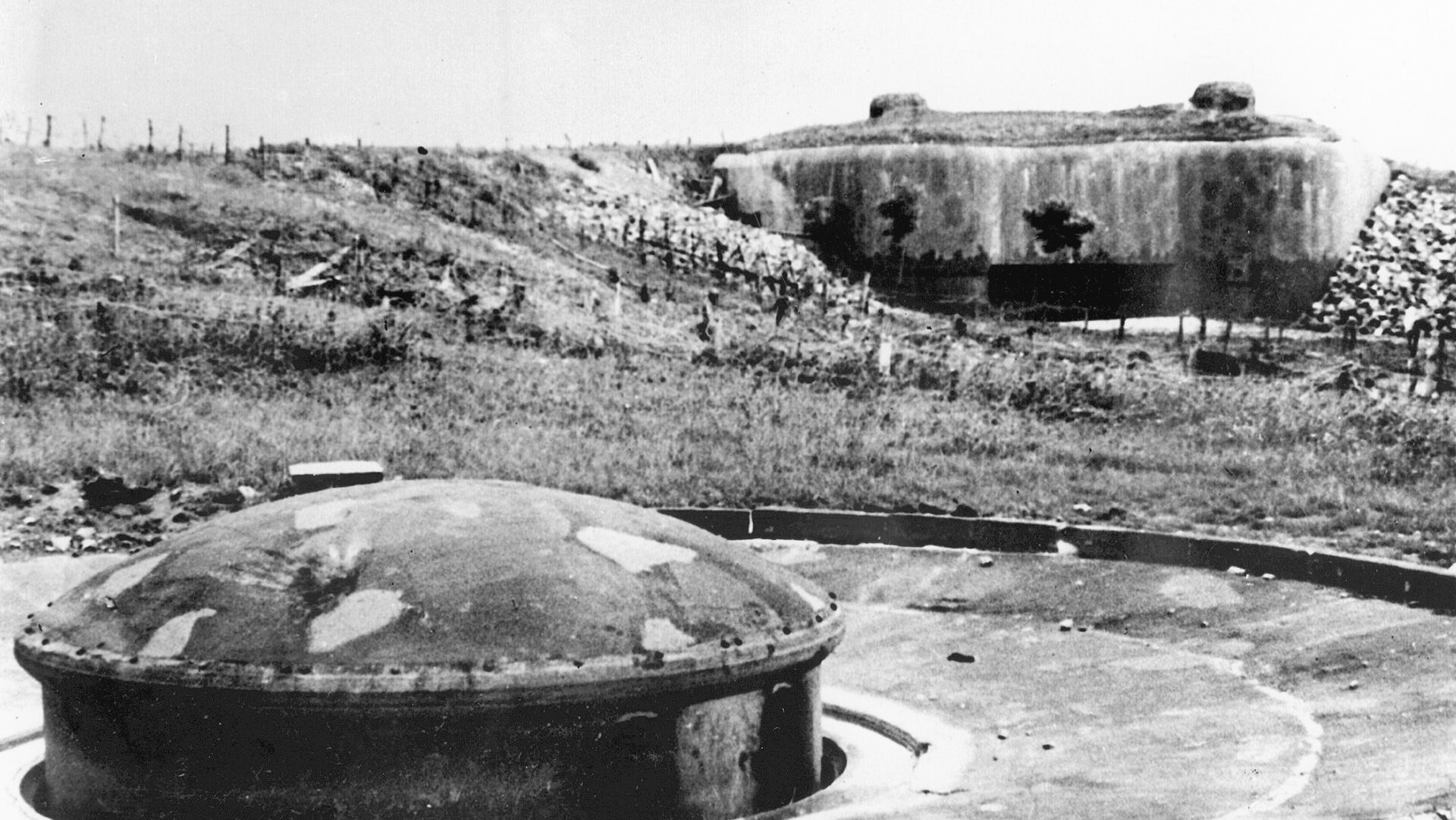
The French Maginot Line: Its Full History and Legacy after WWII
Although the Maginot Line did not prevent a German invasion, it forced Adolf Hitler’s generals to rethink their plans for conquest.
This article appears in: March 2002
By Flint Whitlock
Like a disjointed, moss-covered, concrete serpent, the French Maginot Line snakes some 800 miles, from the Mediterranean border with Italy northward, until it disappears near the North Sea. The serpent’s blank, unseeing eyes—from which the barrels of cannon and machine guns once unblinkingly stared toward France’s traditional enemy—today gaze across a bucolic landscape that gives little hint of the historic events that transpired along its length over six decades ago. The serpent, constructed over a period of 11 years at a cost of some seven billion prewar francs, was France’s last, best hope to avert another German invasion, another devastating war. The serpent is the largest remaining artifact from World War II. It is the Maginot Line.
Considered by many to be an expensive failure, a symbol of French passivity and retrenchment, of her “bunker mentality” and unwillingness to boldly face the growing Nazi menace in the 1930s, the Maginot Line was an incredibly costly and highly controversial project. In one sense, however, it did exactly what it was designed to do: It forced the enemy to invade France at a different place.
30 Prior German Invasions Into France
“La Ligne Maginot” was born out of France’s deep-seated fear of another invasion by her neighbor and longtime foe, Germany. Except for a few rivers and the gentle mountains of the Vosges, there are few natural barriers to invasion. Thirty times over the centuries, Teutonic warriors marched virtually unimpeded into France and, five times during the 19th century alone, German guns imperiled Paris. The Franco-Prussian War of 1870, which was still bitterly recalled by the French generals and political leaders in 1914, brought home how utterly defenseless France was in the face of determined aggression.
To prepare for the future, the French looked to the past. Stoutly constructed, fixed fortifications have existed since ancient times, reaching their pre-Maginot apogee during the reign of King Louis XIV in the late 17th century, when the brilliant army officer and engineer Sebastien le Prestre de Vauban designed and oversaw the construction of a series of fortresses that admirably defended French interests. Vauban’s ingenious creations protected some one hundred towns, villages, and other places of importance, including Tournai (Belgium), Briançon, Ypres, and Strasbourg, to name but a few. Despite their enormous cost and susceptibility to conquest, fixed fortifications remained for centuries the best defense against an attacking force, and the French were among the masters at building this type of fortification.
Such continued to be the case even as late as the Great War of 1914-1918, where the thick concrete walls and deeply buried fortifications of Verdun proved to be very hard nuts for the Kaiser’s forces to crack. One of the huge Verdun forts, Douaumont, was pounded by thousands of shells, up to 420mm in caliber, yet only five of its 30 casemates fell to the Germans in a battle that lasted 10 months and resulted in unimaginable casualties on both sides.
Manpower Hindered by the Great War
This reality, combined with another very salient factor, led the French to believe that their future security lay in ferro-concrete. The other factor that inevitably turned France toward fixed fortifications was the tremendous slaughter of her sons during World War I; it is estimated that 1.2 million Frenchmen lost their lives during that conflict. As a result, there were 1.2 million fewer potential fathers coming home from the war, and France’s birthrate fell precipitously after the war. The declining birthrate augured a severe shortage of future soldiers to guard the nation, which meant that other means for the defense of France needed to be found.
To some experts, the Great War proved that fixed fortifications had no future. The next war, these experts contended, would be a highly mobile affair. The advent of the dirigible, airplane, and tank meant that fortifications on the ground could be easily bypassed. Fixed fortifications, the critics argued, were as obsolete and extinct as the dinosaurs. Some brought up Karl von Clausewitz’s postulation: “If you entrench yourself behind strong fortifications, you compel the enemy to seek a solution elsewhere.”
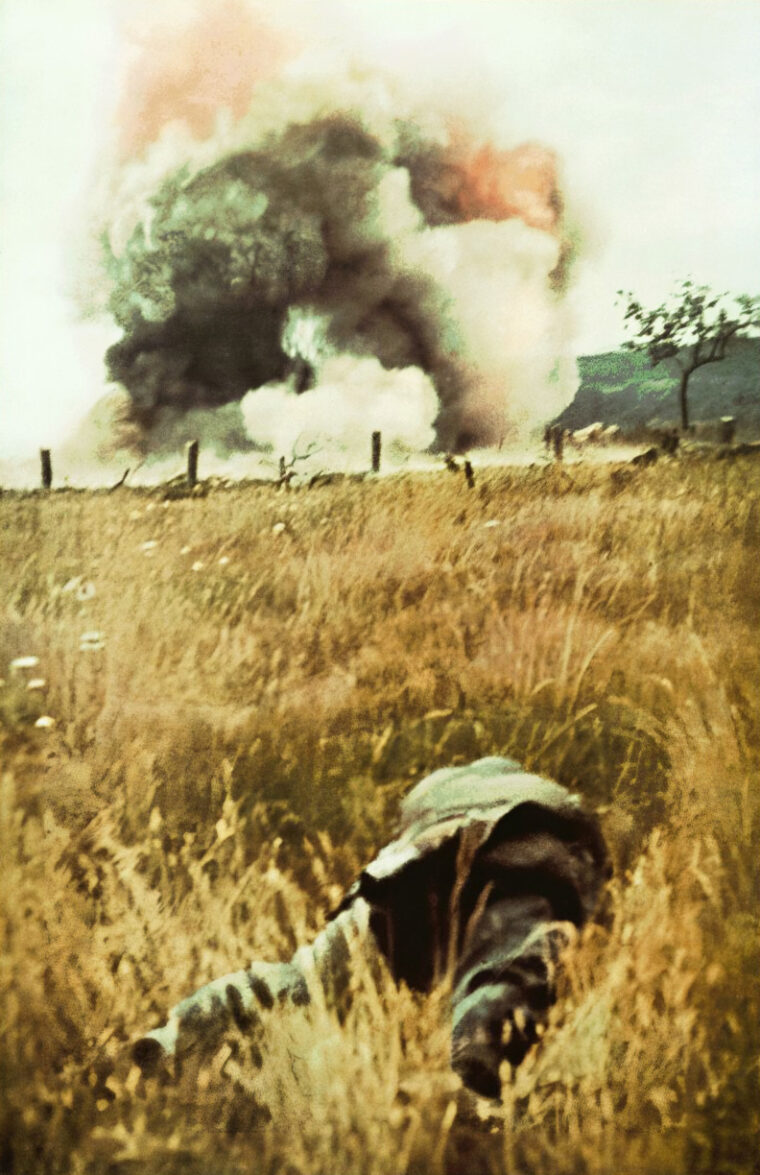
The men charged with France’s defense were not swayed. Since fielding a large standing army was impossible for at least another generation, a line of fortresses, each at least as strong as Douaumont, was seen as the primary means of keeping the invading Huns at bay.
France had another reason for embracing the idea of fixed fortifications. Following the Armistice of 1918, the Americans and British, shocked at the war’s cost and carnage, refused to guarantee that they would come to France’s aid should she ever be attacked again. Feeling betrayed by her allies, France realized she must look inward for her future survival.
The “Continuous Front”
With political and economic turmoil wracking Germany during the late 1920s, French leaders were clearly worried about a new and even more terrible conflict. Security seemed to lie with a successful strategy from the last war: the idea of the “continuous front.” Although the “continuous front” had been severely battered at places, it had, for the most part, held; ultimately, the German invaders had been repulsed. The French political and military leadership assumed that the next war—and they firmly believed that there would be another war—would again require the establishment of a continuous front, especially given France’s projected manpower shortage. Some sort of defensive wall guarding her border with Germany—and beyond—would be necessary to halt any invasion long enough for the reserves to be called up and transported to the front.
That, at least, was the theory. The question now was, Could it be put into practice? Such a wall would need to stretch from the Mediterranean to the English Channel, and would cost billions of francs. Only the Great Wall of China, almost 4,000 miles long, covered a greater distance. Was such a thing even possible?
Beginning in 1922, the feasibility of constructing such a defensive work was studied and hotly debated by the Territory Defense Commission, led by Marshals Philippe Pétain, Ferdinand Foch, and Joseph Joffre, France’s heroes of the Great War. While Foch and Joffre advocated a more flexible, mobile approach, Pétain clearly favored a heavily fortified, static defensive line. Gradually, Pétain’s views prevailed and, in December 1925, the commission was succeeded by the Frontier Defense Commission, formed by Minister of War Paul Painlevé, to further look into the matter.
Neglecting Belgium
Painlevé’s board determined that three most likely invasion routes required immediate fortification. Three Régions Fortifiées , or fortified regions, were established: the Metz R.F., in the Moselle Valley between Longuyon and Teting on the Nied River, which was designed to block any incursion into the valley and protect the Briey-Thionville industrial area; the Lauter R.F., east of the Hagenau Forest between the Saar and Rhine Rivers, which would seal off the invasion route used by the Germans in 1870; and the Belfort, or Upper Alsace, R.F., which would guard the Belfort Gap in the Vosges Mountains, near where the borders of France, Germany, and Switzerland come together.
Historian and journalist William Shirer observed, “The trouble with the Maginot Line was that it was in the wrong place. The classical invasion route to France which the Germans had taken for nearly two millennia, since the earliest tribal days, lay through Belgium. This was the shortest way and the easiest, for it lay through level land with few rivers of any consequence to cross.”
The planners countered their critics by saying that defenses in the Alsace-Lorraine region would force the Germans into disastrous frontal attacks against the strongpoint. If the Germans chose to outflank the defenses, the thinking went, they would have to violate the neutrality of either Belgium or Switzerland, and the French assumed the Germans would not risk worldwide condemnation by violating neutral territory again. But, most of all, it was hoped that just the sheer presence of such a massive defensive line would dissuade the Germans from even considering invasion.
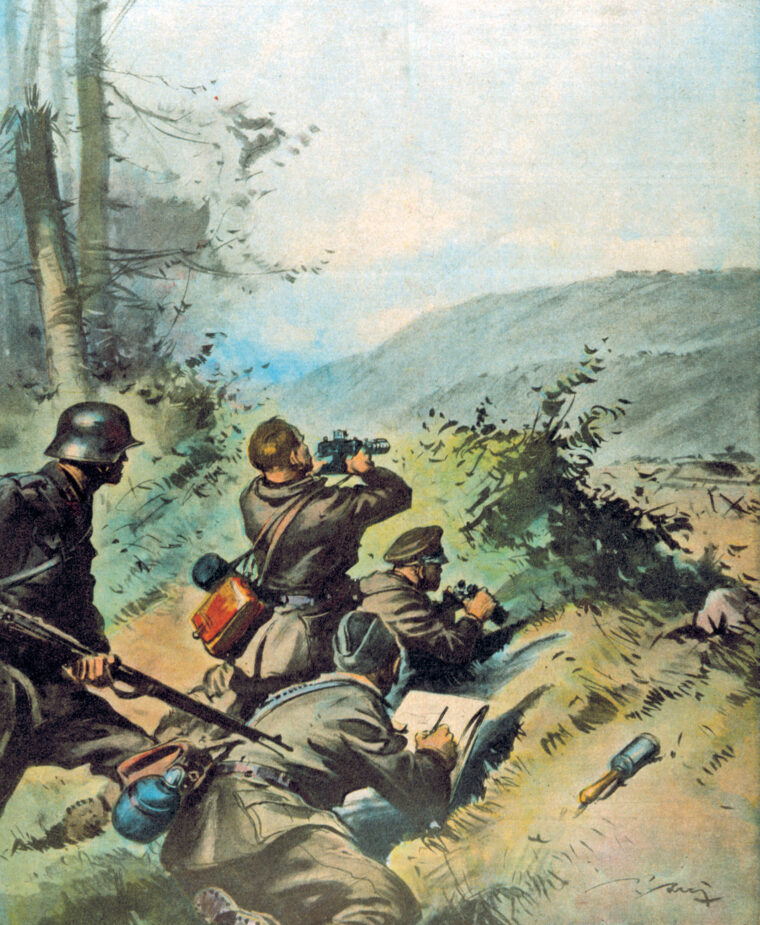
In September 1927, the Organizing Committee for the Fortified Regions (CORF) was established, and the following February construction began on two small-scale experimental facilities that would allow engineers to work out the practical details.

In early 1930, with the world in the grip of an economic depression, initial appropriations for the massive project—some three billion francs—were closely scrutinized by France’s Chamber of Deputies; Painlevé was out of office, and there was no assurance that the necessary funds would be allocated. Painlevé’s successor as Minister of War was a literal giant of a man (he stood six feet, six inches tall), André Maginot, a former member of the Chamber of Deputies and a disabled veteran of the Great War.

“One Imperious Necessity”
Maginot had also served, in 1913-1914, as Under-Secretary of State for War. When World War I broke out, he had a choice of serving either in Parliament or the army; he chose the latter, eschewing a commission to serve as a common soldier. Recipient of France’s highest award for valor, Sergeant Maginot was gravely wounded while on a patrol on the night of November 9, 1914. His kneecap was shattered, but his leg was saved; he would walk with a fused knee for the rest of his life. Once he became Minister of War, the 53-year-old Maginot threw himself and his department whole-heartedly into turning the idea of Painlevé’s defensive line into reality.
In a speech to the assembled lawmakers in January 1930, Maginot made an impassioned plea for funding the defenses: “Whatever form a new war may take, whatever part is taken in it by aviation, by gas, by the different destructive processes of modern warfare, there is one imperious necessity, and that is to prevent the violation of our territory by enemy armies. We all know the cost of invasion, with its sad procession of material ruin and moral desolation.” Although France had been nearly bankrupted by war, the Chamber of Deputies nevertheless voted to appropriate the needed capital.
Construction of the first four fortresses, at Rochonvillers, Hackenberg, Simserhof, and Hochwald—all protecting the industrialized, mineral-rich Alsace-Lorraine area—soon began. It was expected that the project would take five years to complete. André Maginot, however, would not live to see the ultimate success or failure of the defensive system that bore his name; he died on January 7, 1932, from typhoid fever after eating bad oysters at a New Year’s Eve banquet.
Taking over as Minister of War was Edouard Daladier, who vowed to continue the work, and the project moved forward as finances permitted. Time was of the essence for, since the following year, across the border, Adolf Hitler would be named Chancellor of Germany, and he harbored a deep hatred toward France for formulating the harsh, anti-German provisions in the Treaty of Versailles.
1933: Construction Expands
In addition to the treasury-breaking economic realities of constructing a defensive wall the entire length of France’s eastern border, there were serious political considerations. One major part of Pétain’s original argument for the line’s construction was that, by forcing the Germans to avoid the line by going around it, they would be required to violate Belgian and/or Swiss territory, and France had pledged to come to the aid of whichever ally was invaded. As historian Anthony Kemp put it, “In view of the alliance with Belgium, how could France morally justify the fortification of their common frontier without giving the impression that, when danger threatened, she would not advance to help? Besides, it would imply lack of confidence in the Belgian army.” Thus, to avoid offending the Belgians, France made the fateful decision not to continue the wall all the way to the North Sea. She trusted that, if the Germans were to invade again, they would not repeat the Schlieffen Plan—an attack through the Low Countries—that had proven so successful in 1914.
The pace of construction picked up; by 1933, there were 20 major and 27 minor fortifications, along with hundreds of other facilities, being built in the Alsace-Lorraine angle facing Germany. But, in 1934, Daladier rightly worried that this relatively short stretch of defensive works could be easily outflanked. He lobbied for, and was granted, the necessary funds to extend the line beyond the original structures.
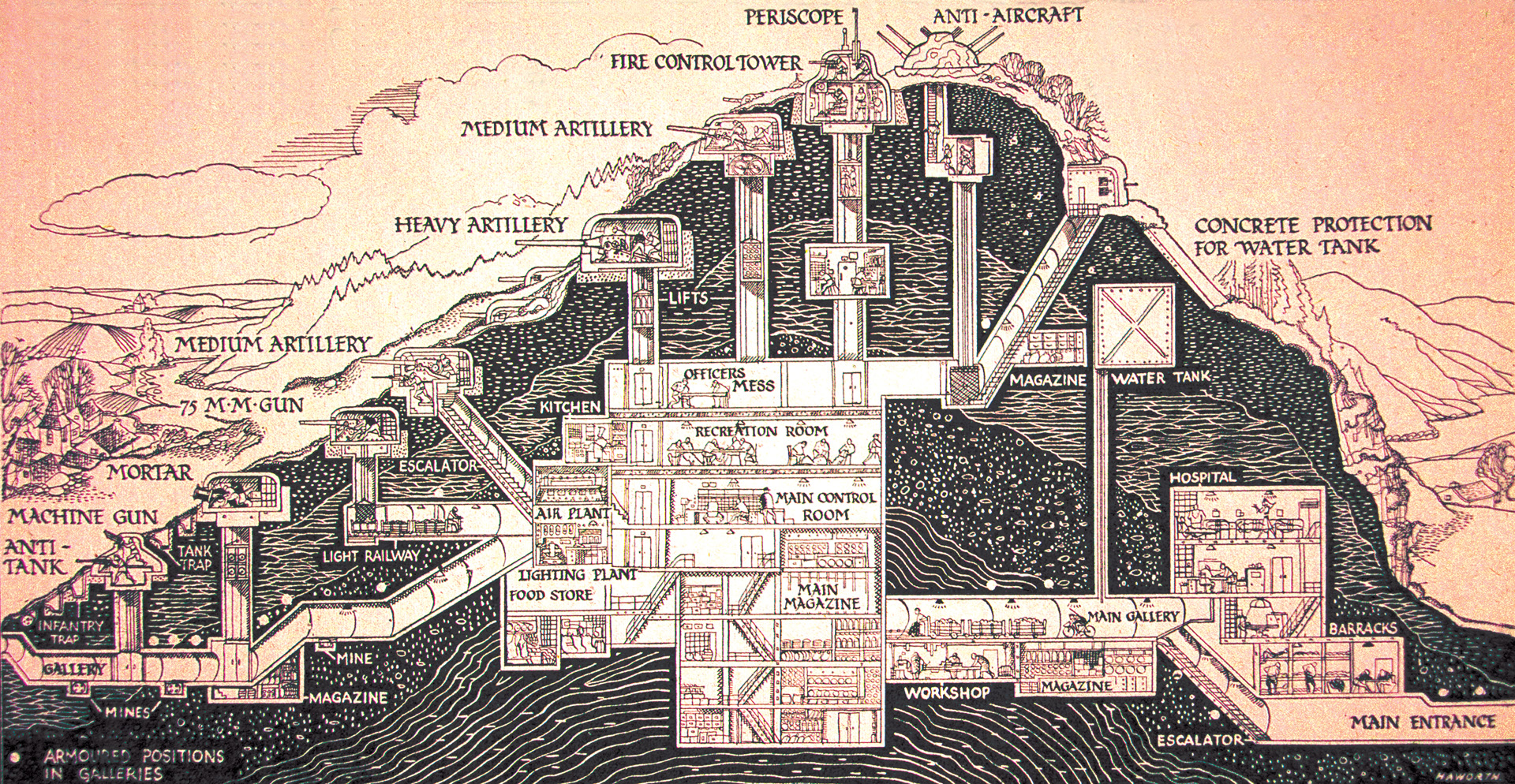
The Maginot Line was organized as a “defense in depth.” Scores of fortresses, bunkers, pillboxes, shelters, miles of underground passageways, and other features made up the most technologically advanced defensive system of their day. An army of planners, architects, engineers, and armament specialists envisioned some of the most diabolical obstacles ever devised to thwart an enemy. The most forward positions, a string of small, outer posts, known as maison fortes, were set directly along the border. In the event the enemy was seen approaching the frontier en masse, the occupants of these listening posts would sound the alarm, fight a delaying action, demolish nearby bridges, and set up obstacles at crossroads before falling back.
Two Main “Ouvrages”
Behind this forward line, about two or three kilometers to the rear, was a series of two-level pillboxes, or casemates, complete with small-caliber armaments, mostly 25mm, 37mm, and 47mm antitank weapons and machine guns. These positions were sited about 1,200 meters from neighboring casemates and could provide interlocking, mutually supporting fire. In addition to firing embrasures, many casemates sported “pop-up” steel turrets that could be raised and lowered at will.
The casemates had a variety of designs and functions. Most were built into a hillside so that virtually nothing was visible from the front. The turrets (most casemates had two) appeared to be giant steel mushroom caps that contained observers, machine guns, mortars, or antitank guns. The reinforced concrete walls were from four to seven feet thick. The entrance was located at the rear of the casemate and was, naturally, more exposed, although gun embrasures were sited here as well, and the heavy steel door was on the other side of a retractable bridge that spanned a moat.
The living quarters for the garrisons that ranged from 12 to 60 men were located in the lower level of the casemate, which was designed to be self-sustaining. A diesel generator provided power and light, there was an air-conditioning and ventilation system, a well and water pump, and storerooms full of food and ammunition. Some of the casemates were linked by underground tunnels to neighboring casemates. In front of and between the casemates were lengths of steel rails set vertically in concrete to act as tank traps and, in some places, antitank ditches were dug to stop enemy Panzers or channel them into lethal killing zones.
Some five kilometers behind the casemates were the real “teeth” of the French Maginot Line—the ouvrages , or fortresses, which were divided into two main classifications, based on the size of their garrison and their armament. The infantry fortresses were called minor fortresses ( petit ouvrages ), while the larger artillery fortresses were known as gros ouvrages . Each gros ouvrage had two entrances, one for personnel and one for munitions and supplies, sometimes as far as two kilometers to the rear and accessible by underground electric train.
The ouvrages were technological marvels. The reinforced concrete roofs were so thick that they were basically impenetrable by any munitions the Germans possessed. The minor fortresses had two or three “battle blocks,” each with its own turret, and could accommodate from 65 to 250 men. The major fortresses were, in many ways, like subterranean cities, although others compared them to large, concrete submarines. Both views were accurate, for the troops’ existence below ground was a dank and gloomy one. Seeping water needed to be pumped out constantly. The air was chilly, almost clammy. Only artificial light illuminated the multitude of rooms and, despite the hard-working ventilation system, fresh air was almost nonexistent—except for those detailed to man the drafty turrets and observation posts, where the pressurized air from inside the underground forts blew like a gale.
Life Amid the Bunkers
To help the observers and gunners zero in on their targets, the inside walls of the turrets were decorated with drawn and painted dioramas that depicted the terrain features of the surrounding countryside and their predetermined ranges and azimuth readings.
Despite the many discomforts, life below the earth was not altogether intolerable. Large kitchens and mess halls fed the troops and well-equipped hospitals and dental facilities catered to their medical needs. There were sleeping quarters, latrines, wine storage areas (of course!), a canteen, mortuary, emergency power plant, and even jail cells. Transportation of personnel, food, and ammunition to all parts of the lengthy, concrete tunnels was provided by electric train. For entertainment, the soldiers were treated to movies. To keep the men from developing health problems associated with Vitamin D deprivation, regular sessions under sunlamps were held. Surprisingly, morale among the troglodyte troops remained high, for they believed that, if war came, they were in the safest, most impregnable place in all of France.
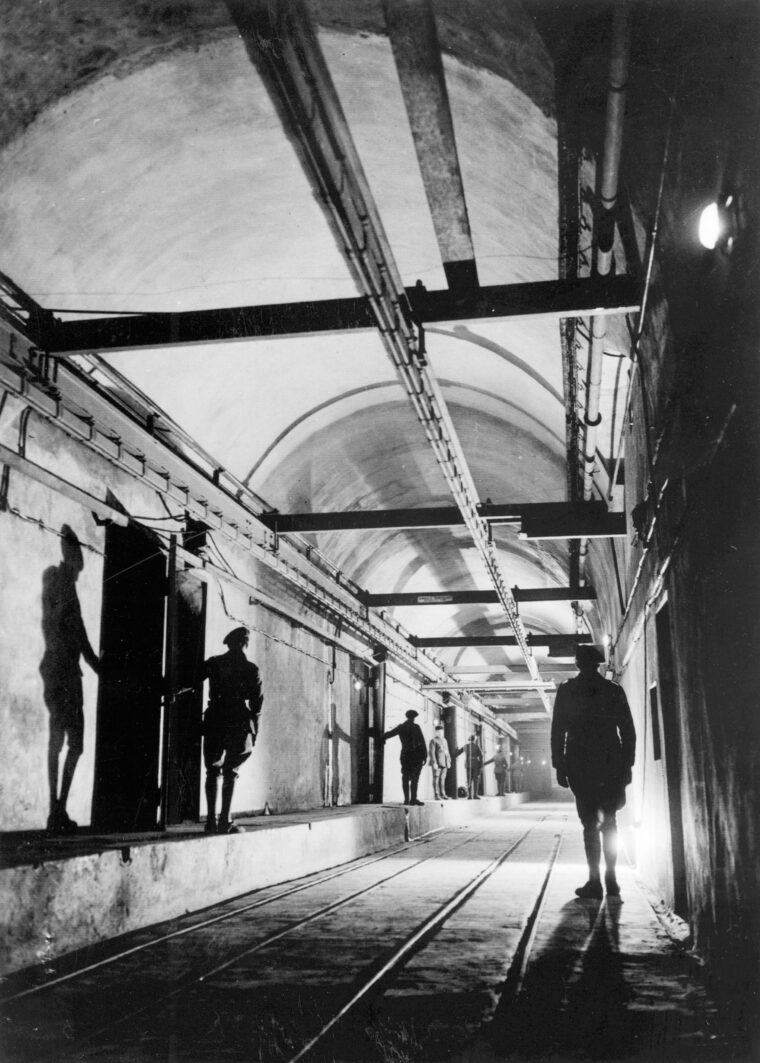
Armament varied for each gros ouvrage . The retractable, rotating, armored turrets were fitted with either 75mm howitzers, 135mm mortars, or 37mm or 47mm antitank guns. Other turrets also housed 50mm or 81mm mortars or grenade launchers, while still others combined the firepower of a 25mm antitank gun and a twin Reibel 7.5mm machine gun, and some were all machine gun affairs. Scores of smaller observation turrets, equipped with either periscopes or viewing apertures, also dotted the landscape.
In the unlikely event that the enemy broke through the fortress line, the troops would be met by another line of casemates and bunkers some five kilometers to the rear. Even farther back were peacetime barracks for the troops, food and ammunition storage areas, railway lines to transport soldiers and ammunition to the fortresses, powerhouses to supply electricity, huge railway guns and other artillery positions, and such.
Unlike its Chinese counterpart, no attempt was made to create a solid, unbroken line of fortifications. Instead, intervals were created deliberately between the strongpoints and covered by antitank obstacles, artillery concentrations, and strong, mobile infantry forces. It was at these carefully chosen gaps, selected to give every advantage of terrain to the French defenders, that the invaders would be administered the coup de grâce . The border along Belgium’s thick Ardennes Forest was only lightly fortified, for the French were convinced that no large-scale invasion force could possibly advance along the narrow paths or through the dense tangle of trees and thickets. Marshal Pétain is famously reported as having pronounced in 1934, “With special modifications, the Ardennes Forest is impenetrable. Therefore, this sector is not dangerous.”
Belgium Declares its Neutrality
By 1935, France sensed that a new war with Germany was rapidly approaching. Besides Hitler’s armed reoccupation of the Rhineland, the unexpected return of the Saar region to Germany caused major shockwaves throughout the Republic. Assuming that the Saarland would either vote to become French or would remain under the control of the League of Nations, France had not planned to fortify the region between the Metz R.F. and the Lauter R.F. When the populace voted in January 1935 to become part of Germany, France hurriedly began filling in the gap with casemates and ouvrages . Furthermore, dams were constructed in the area so that, in the event of a German assault, they could be destroyed and the entire region flooded and rendered impassable.
The initial phase of construction of the Maginot Line was completed in late 1935, and the first troops occupied the positions the following March. French Commander-in-Chief General Maurice Gamelin correctly guessed that the Germans, if war came, would avoid the Maginot Line and slice through Belgium into northeast France, just as they had done in the Great War. Gamelin had great faith in Belgium, whose Fort Eben Emael on the Belgian-German border near Liège was reputed to be the strongest fortress in Europe and perhaps the world.
France’s hopes that Belgium would request a French counterattack were dashed when Belgium declared its permanent neutrality. No foreign armies—French or German—would be permitted to enter Belgium, declared Prime Minister Paul-Henri Spaak. Discarding France’s earlier desire to avoid offending the Belgians, Daladier responded by announcing that France would extend the Maginot Line defenses all the way to the North Sea. Several thousand pillboxes, bunkers, minefields, and other obstacles were hastily thrown up along the French-Belgian border from Longuyon northward to Dunkirk. France then looked south toward another possible threat.
Following Benito Mussolini’s rise to power in 1922, France saw Italy as a potentially worrisome opponent, and some effort was made to fortify the mountain passes along the French border nearest the Alps. Even the island of Corsica, located in the Mediterranean between France and her African colonies, was fortified against invasion.
The Eight-Month ‘Sitzkrieg’
While France continued to strengthen and lengthen the French Maginot Line, the world marched closer to war. With lightning speed, Germany invaded Poland on September 1, 1939. Although woefully unprepared, France and Great Britain lived up to their treaty obligations by declaring war on Hitler’s Reich. But war did not immediately come to France; first came an eight-month “Sitzkrieg,” or “Phony War,” during which the two sides glared at each other as if daring the other to make the first move.
Almost lulled to sleep by this period of tense inaction, France was caught off guard when, on Friday, May 10, 1940, 136 German divisions—including armored spearheads commanded by Erwin Rommel and Heinz Guderian—struck violently in the West, plunging into Holland and Belgium and driving unexpectedly through Luxembourg and the “impenetrable” Ardennes Forest, emerging near Sedan. Twenty-five hundred German aircraft controlled the skies and destroyed opposing military aircraft before they could take to the air. Sixteen thousand parachutists descended upon Rotterdam, Leiden, and The Hague, while still others landed on the massive Eben Emael fortress to begin its reduction. The French city of Nancy was bombed.
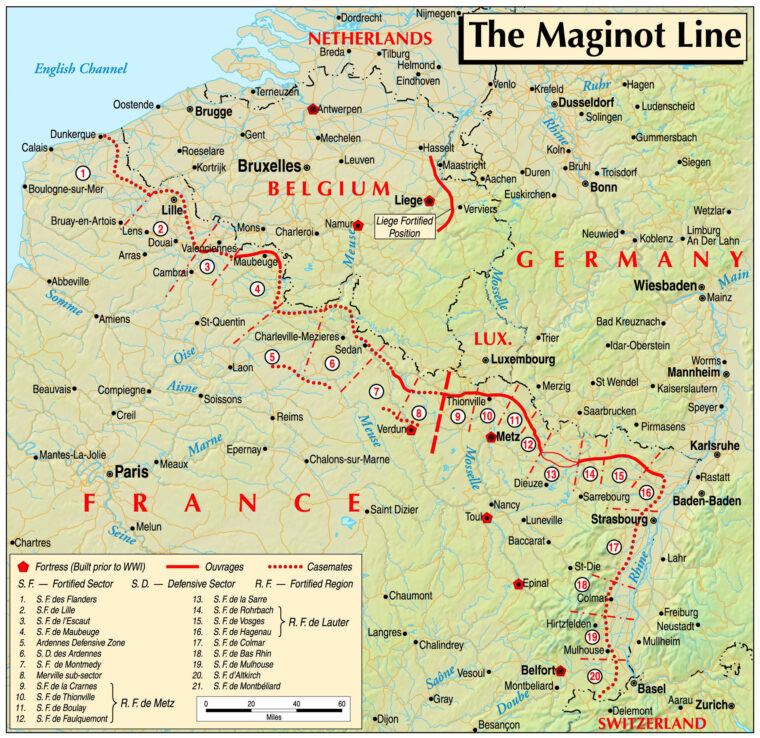
British bombers struck back at the Germans crossing the Meuse River near Sedan, but a number were downed by the Luftwaffe and antiaircraft guns. A desperate French attempt to seal off the breakthrough was thrown back. As French units retreated, so too did the British Expeditionary Force (BEF). A wedge was being driven between the two Allies.
Holland capitulated on May 15. Two days later, the Germans took Brussels, although Belgian troops continued to resist elsewhere in the country. By May 21, the Germans had reached the English Channel and the mouth of the Somme River . French and British forces were effectively split, and German pressure began pushing the remnants of the BEF toward the coastal town of Dunkirk.
Pulling Apart the French Maginot Line
On May 15, one of the minor Maginot Line fortresses at La Ferté, in the Montmedy sector not far from Sedan, was the first to fall as the 104 defenders became the focus of a blistering attack by elements of the German 71st Infantry Division. Subjected to bombardment from 88mm flak guns and 210mm heavy mortars, the petit ouvrage was nearly pounded into submission, but an infantry counterattack threw back the attackers. The German assault was unrelenting, however, and by May 19 all of the fort’s gallant defenders had been killed, their fortress becoming their tomb.
The Germans next began to systematically pull apart the Maginot Line. In early June, six minor fortresses to the north, in the Escaut, Maubeuge, and Montmedy sectors, fell to the advancing Germans.
To save his forces, General Maxime Weygand, who had replaced Gamelin as commander-in-chief on May 19, ordered a general withdrawal, which robbed the northern portion of the Maginot Line of much of its vital interval forces. During the night of June 12, the French abandoned the casemates and fortresses in the Montmedy sector to the oncoming Germans; further German advancements over the next few days led to additional abandonments. General Charles-Marie Condé, commanding the French Third Army, ordered the retreat to end and the fortresses to resist. Although shelled heavily by the Germans, the ouvrages held out, at least temporarily.
Meanwhile, the strategic situation for all of France was worsening by the hour. By late May, the BEF had been driven into the sea at Dunkirk. The German juggernaut was now swinging southward toward Paris, crushing all opposition. General Weygand was running out of options with which to contain the German onslaught. He had but 60 divisions available to hold off an overwhelming enemy force. The dike was bursting at many points, and France had only a limited number of fingers with which to stem the flood. About the only source of fresh troops was those detailed for interval duty along the Maginot Line. Weygand began pulling them out and throwing them into the ever-widening breaches in the front lines. Without these troops, the forts of the Maginot Line were doomed.
Paris Falls
In the La Crusnes sector, between Longuyon and Longwy, the major fortress of Fermont was attacked by German forces on June 11. Here, about 25 miles north of Verdun, 19 officers and 553 men stood to their guns and put up a valiant defense against the encircling enemy, knowing that their interval troops were gone and that reinforcements would not be coming to their aid. A German 88mm gun was brought up and proceeded to fire shell after shell at a single point on the rear of the fortress in jackhammer-like fashion. Eventually, the repeated firings penetrated the concrete and nearly touched off a magazine full of 75mm shells inside. The German gunners inexplicably ceased firing. That night, the defenders patched the hole in their bunker with iron plates and fresh concrete and waited for the next assault.
For three more days, even as Paris fell on the 14th, Fermont remained under enemy assault but refused to yield. Finally, the Germans ringed the fortress with six batteries of 105mm artillery, two 88mm batteries, three 210mm mortars, and four 305mm mortars. For two solid hours on the morning of June 21, German shells splattered the helpless fortress, but when German infantry attempted to storm the position, they were met with a lethal hail of fire from its gun ports. Later that day, the Germans, under a white flag, asked for a brief cease-fire in order to collect their casualties. The French commander, Capitaine Daniel Aubert, agreed. The attackers had suffered about 80 men dead or wounded; the French had one man injured and another killed.
Although their communications with the outside world had been cut, the defenders of Fermont held out until France agreed to armistice terms with Germany on June 22. It was only after receiving written orders from his superior to abandon the fortress and be taken prisoner by the enemy that Aubert and his men marched out of their scarred and battered fortress, the French Tricolor flying at the head of their proud column.
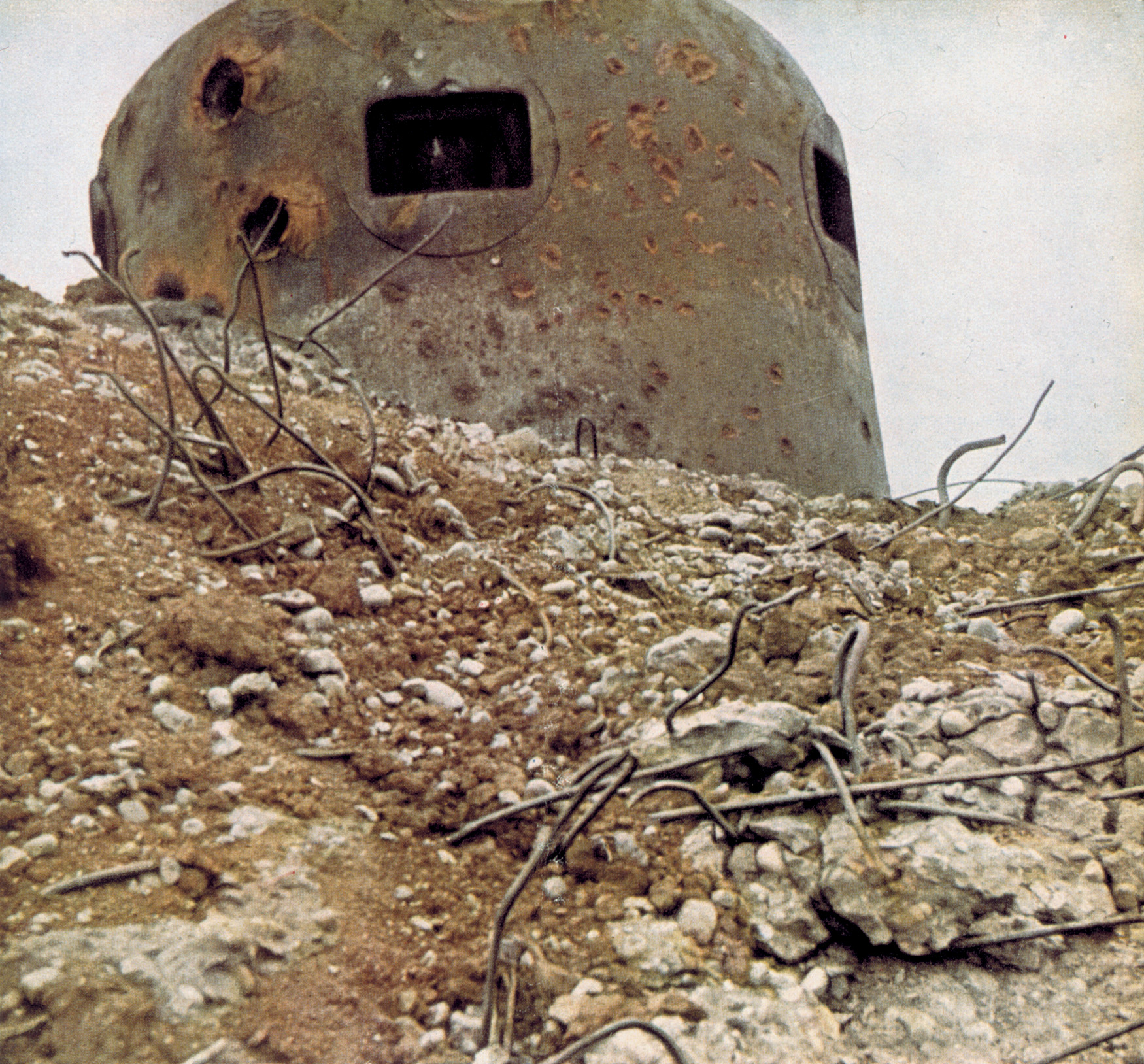
One of two major ouvrages in the Rohrbach Fortified Sector, the fortress of Simserhof, located near Bitche, was under the command of Lt. Col. Raoul Bonlarron and had a complement of 28 officers and 792 men. On June 12, the interval troops guarding Simserhof were withdrawn and the Germans began infiltrating the area. Realizing that he and his men were on their own, Bonlarron announced to them, “The hour is grave for France, the hour is grave for Simserhof … We shall fight … Take heart!” (Read more about the German invasion of France and the events that shaped the Second World War inside WWII History magazine.)
Resistance Lingers in the Boulay Sector
The Germans began their usual artillery bombardment and managed to knock out a petit ouvrage on June 21. With no interval troops to stop them, the German 257th and 262nd Infantry divisions poured around to the rear of the imposing fortress complex and began their assault. Another minor fortress fell victim, but the gros ouvrage ’s guns blazed on. On June 25, after firing some 30,000 defiant shells, the guns of Simserhof went quiet and the defenders reluctantly surrendered.
In the Boulay sector east of Thionville, the Hackenberg fortress was also the scene of much hard fighting and much valor on the part of the defenders. The largest fortress in the entire Maginot Line, Hackenberg consisted of 17 battle blocks. Like the other fortresses, Hackenberg, on June 13, suffered the withdrawal of its interval troops and was ordered to fight on its own to the bitter end.
Two days later, advance German patrols began probing for weaknesses but received only intense fire for their efforts. The Germans were not easily dissuaded. On the 18th, elements of the German 95th Infantry Division arrived and began relentlessly pounding Hackenberg with continuous and heavy artillery barrages. Four days of bombardment had not made a dent in the fortress, which continued to pummel the enemy with barrages of its own. Under a white flag of truce, a group of German officers demanded that the fort’s commandant, Jules Pelletier, surrender. He told the enemy that he had been ordered to fight until the end and that was what he intended to do. Two more days of shelling still produced no victory for the Germans.
Seeing that they were getting nowhere, the Germans redirected their attention toward other fortresses in the area—with similar minimal results. It was only the announcement of the armistice that brought the fighting to an end. On July 4, the undefeated defenders, having been convinced by their superiors to surrender, marched out of Hackenberg and into captivity.
Defense Against Overwhelming Odds
So it went all along the French Maginot Line, with one fortress after another being forced to fend for itself against overwhelming odds. Hundreds, perhaps thousands, of untold stories of personal heroism were written in the dank halls of the Maginot forts. Had it not been for France’s capitulation and orders from higher headquarters to surrender, who knows how long the valiant defenders could have held out? More than one ouvrage commander estimated that his men had food and ammunition enough to last them three more months.
Certainly, the men who manned the fortresses of the Maginot Line are to be remembered as among the staunchest defenders of French honor at a time when the nation’s leaders were ignominiously handing over the country to the enemy.
Today, the visible parts of the Maginot Line are covered with moss and lichen. Where the concrete has been ruptured by munitions, the steel skeleton bleeds rust. Great gashes still scar the steel cupolas. Yet, the aging remnants hold a special fascination for those interested in warfare, fortifications, and courage. Fortunately, 16 of the old fortresses have been renovated and converted into popular tourist attractions, where knowledgeable guides lead visitors through the maze of underground tunnels and galleries and explain the events of more than 60 years ago. Many of the turrets and other pieces of equipment have been restored to operating condition, and many of the fortresses also encompass small museums.
Some of the fortresses that are open to the public include Fermont, northeast of Verdun; Immerhof, at Hettange-Grande, northeast of Metz; Zeiterholz at Entrange between Metz and Verdun; Hackenberg, northeast of Metz; and Simserhof, northwest of Mutzig. Most are open only during the spring, summer, and fall, and some only on weekends and holidays. A handful are still used or owned by the French Army, while scores more lie silently moldering and forgotten in overgrown fields. However, as long as these concrete sentinels remain, their stories of courage will continue to inspire future generations of Frenchmen.
Back to the issue this appears in
Join The Conversation
2 thoughts on “ the french maginot line: its full history and legacy after wwii ”.
Very informative article. Found quite interesting.
If the French had also reinforced the Belgian frontier, much as De Gaulle had wanted with mobile forces, the German invasion of 1940 could have greatly slowed or even stopped. The Polish invasion should have served a lesson but the French military staff was never known for imaginative foresight.
Leave a Reply Cancel reply
You must be logged in to post a comment.
Share This Article
- via= " class="share-btn twitter">
Related Articles
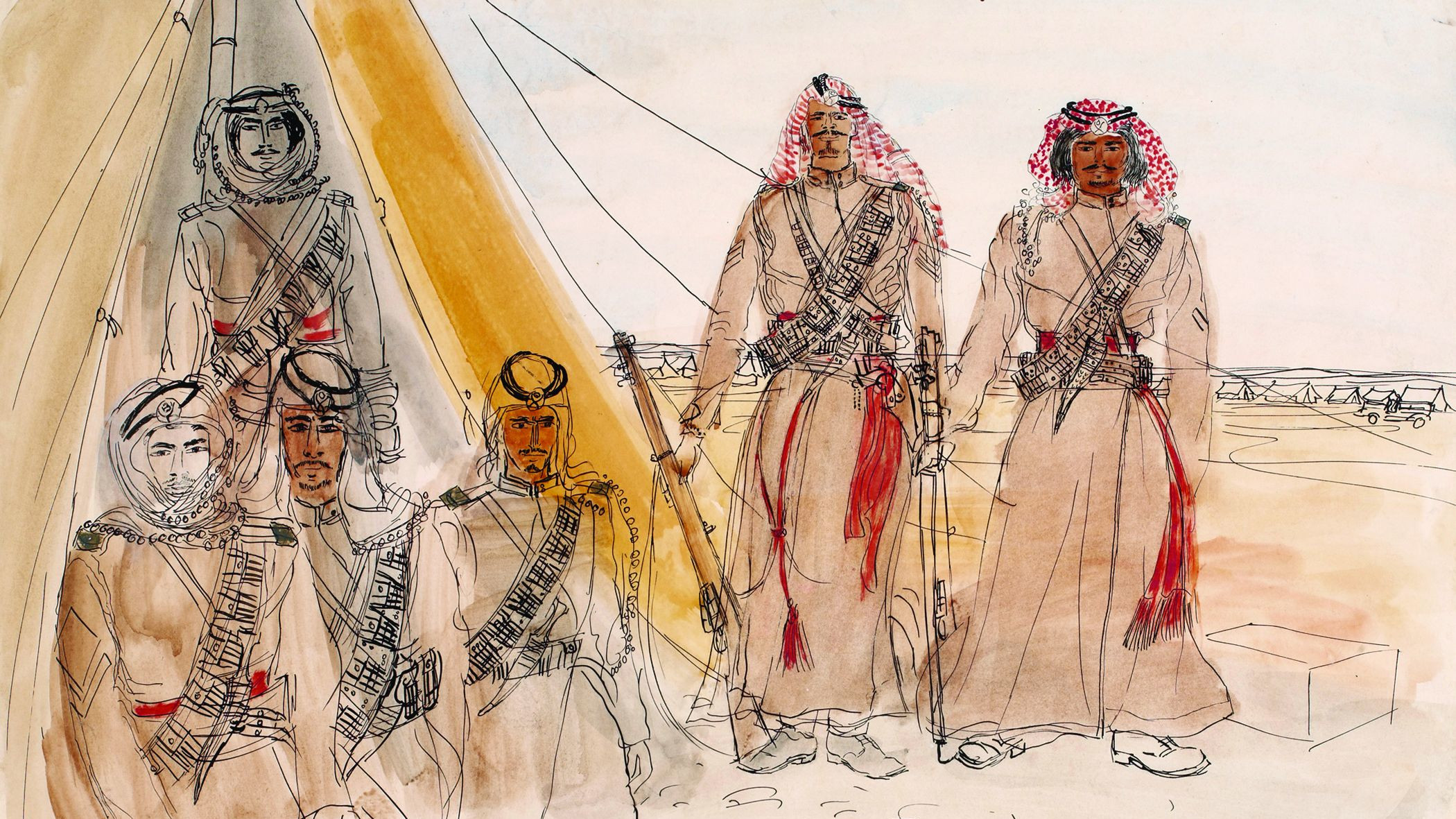
Baghdad’s 1941 Regime
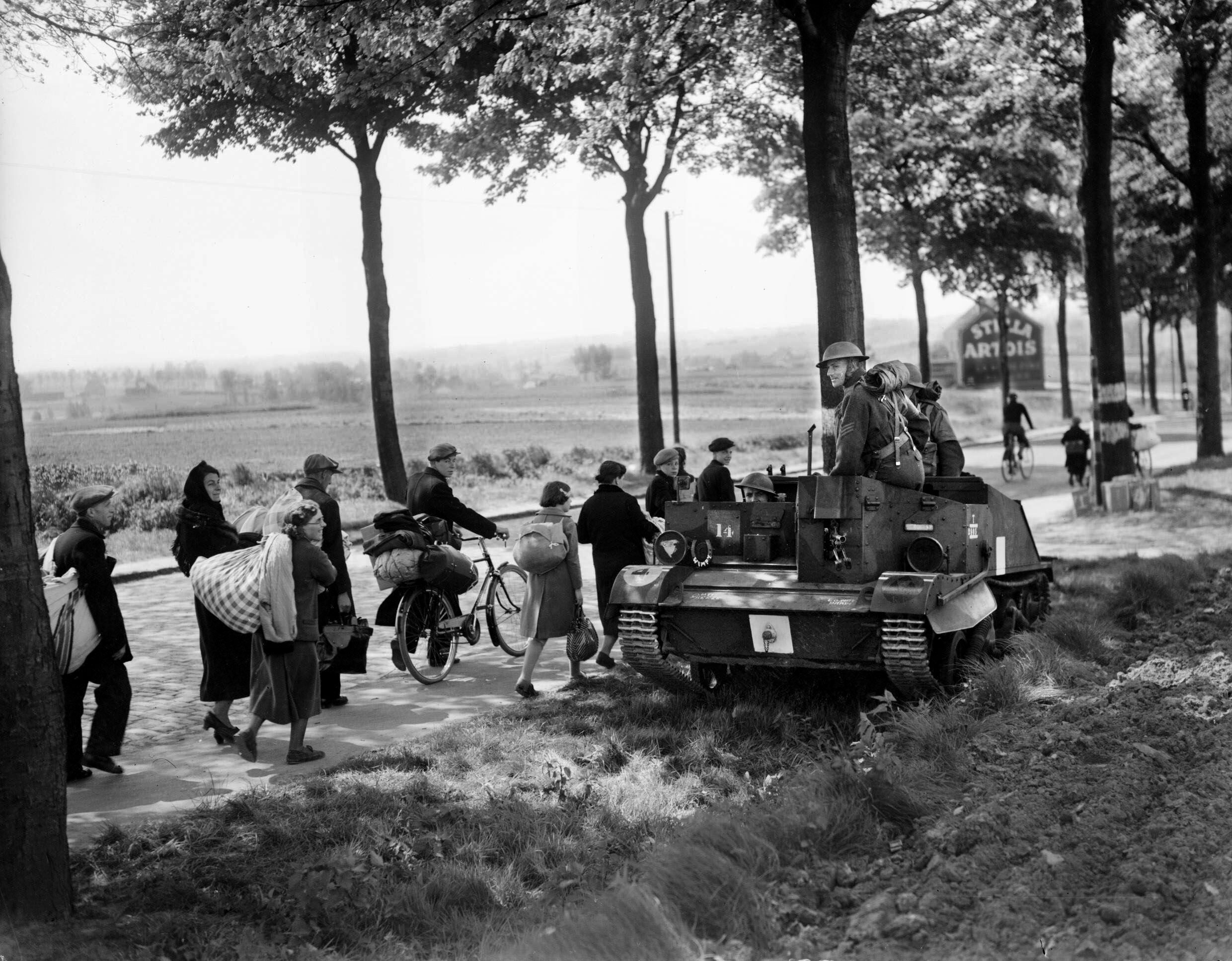
Major General Edward L. Spears
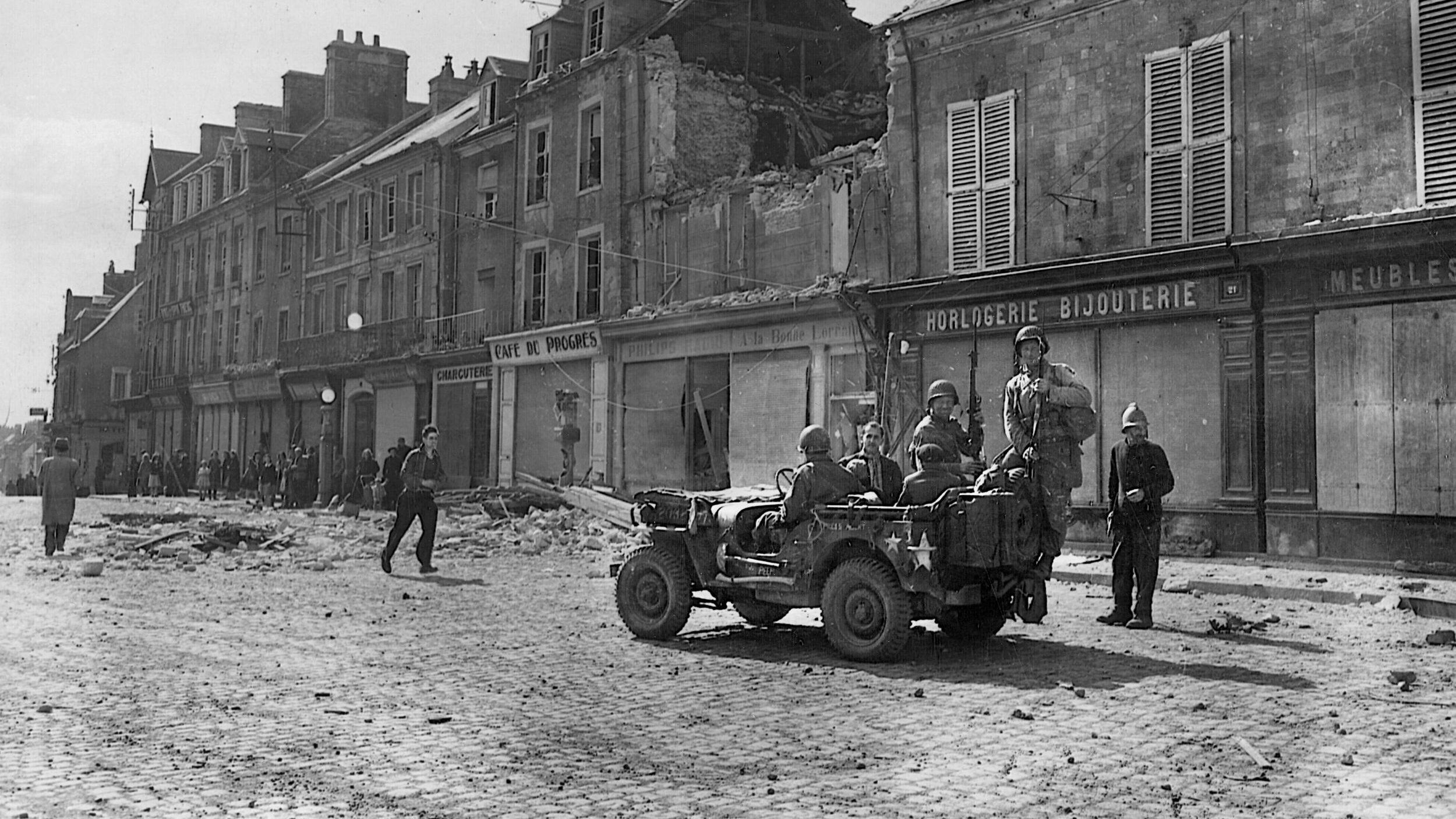
Band of Brothers’ Buck Compton: One Man’s Call of Duty
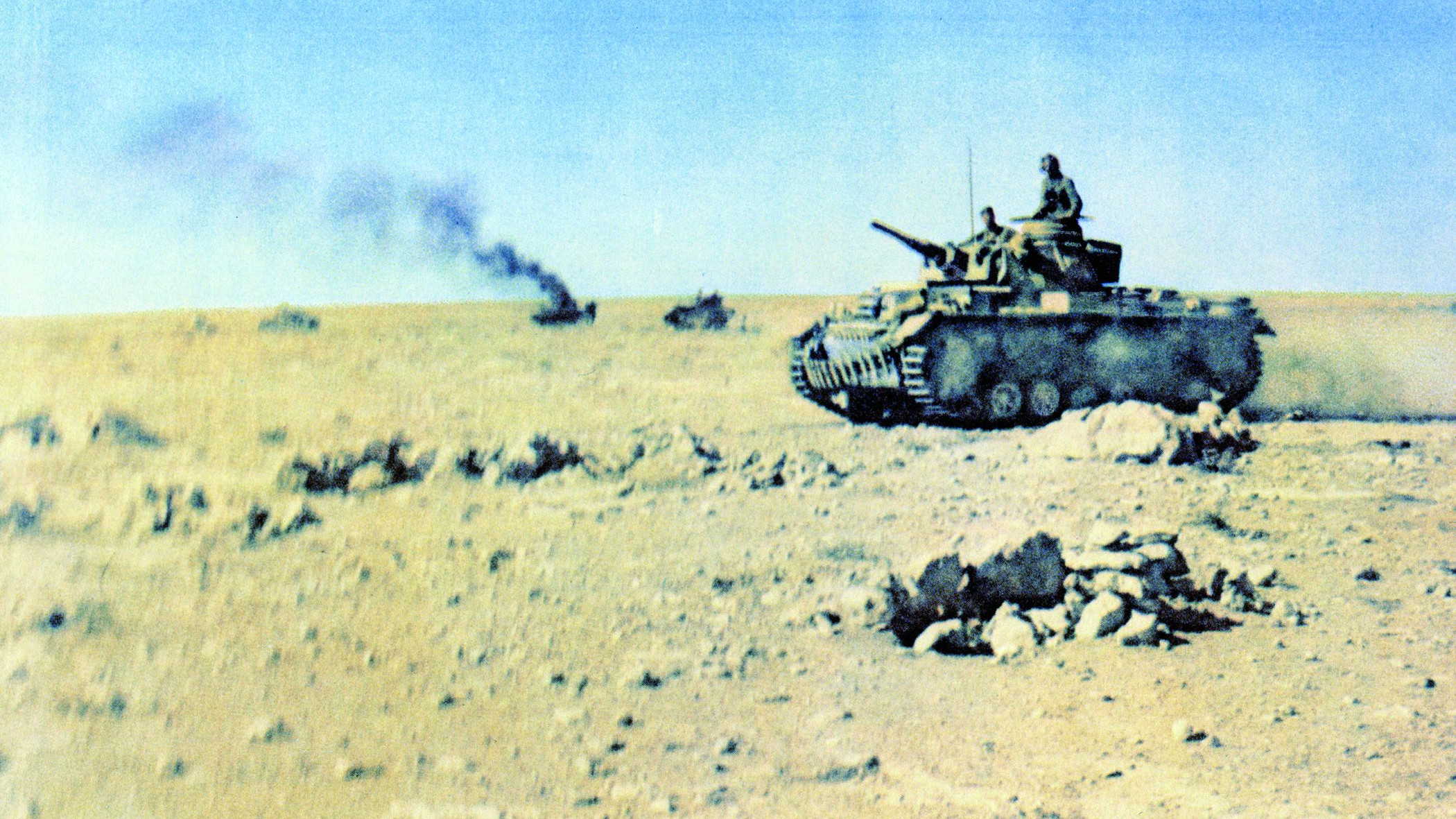
Tank Battle in Happy Valley: 1st Armored Division in the Run for Tunis
From around the network.
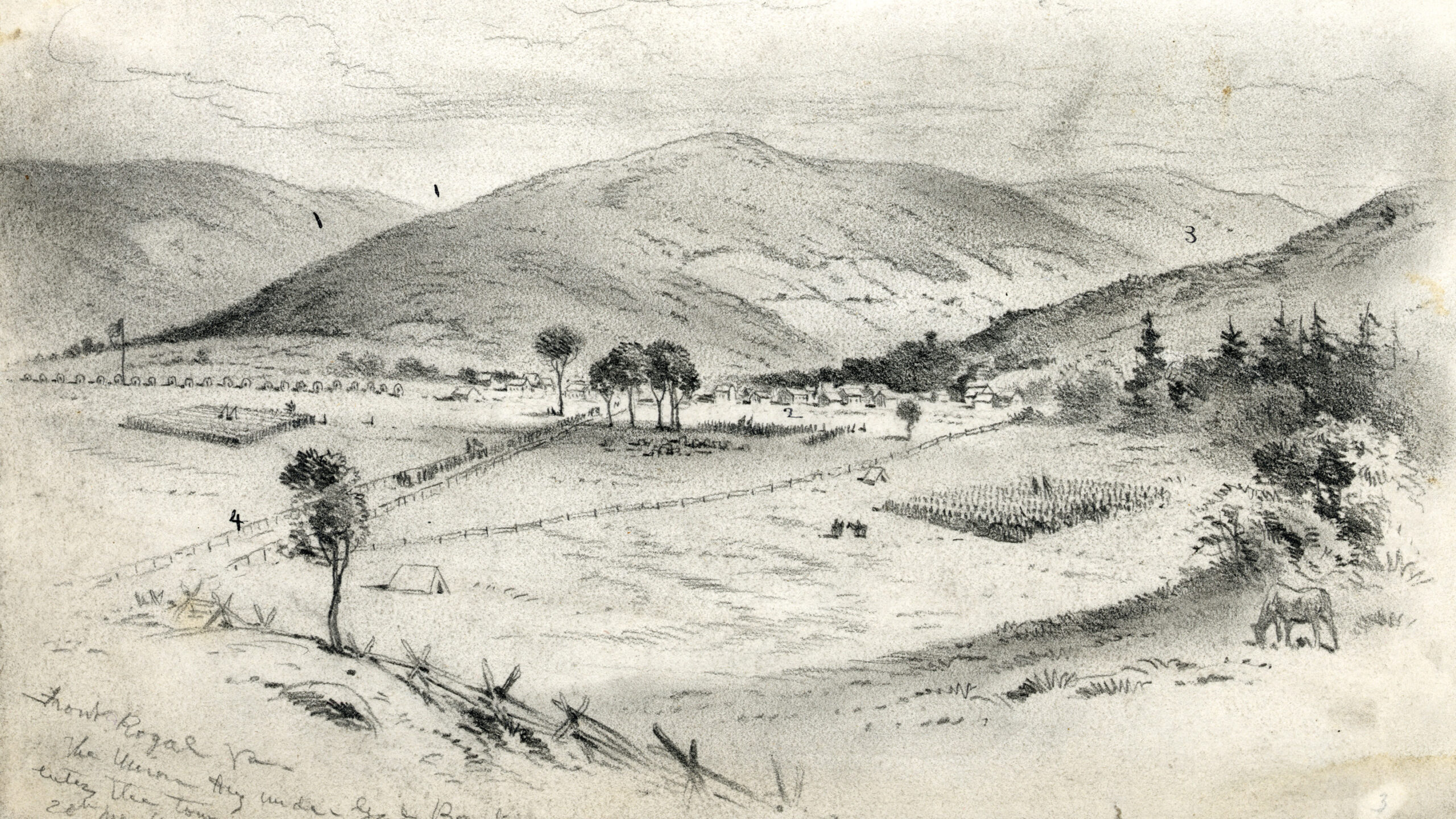
Belle Boyd: Confederate Spy
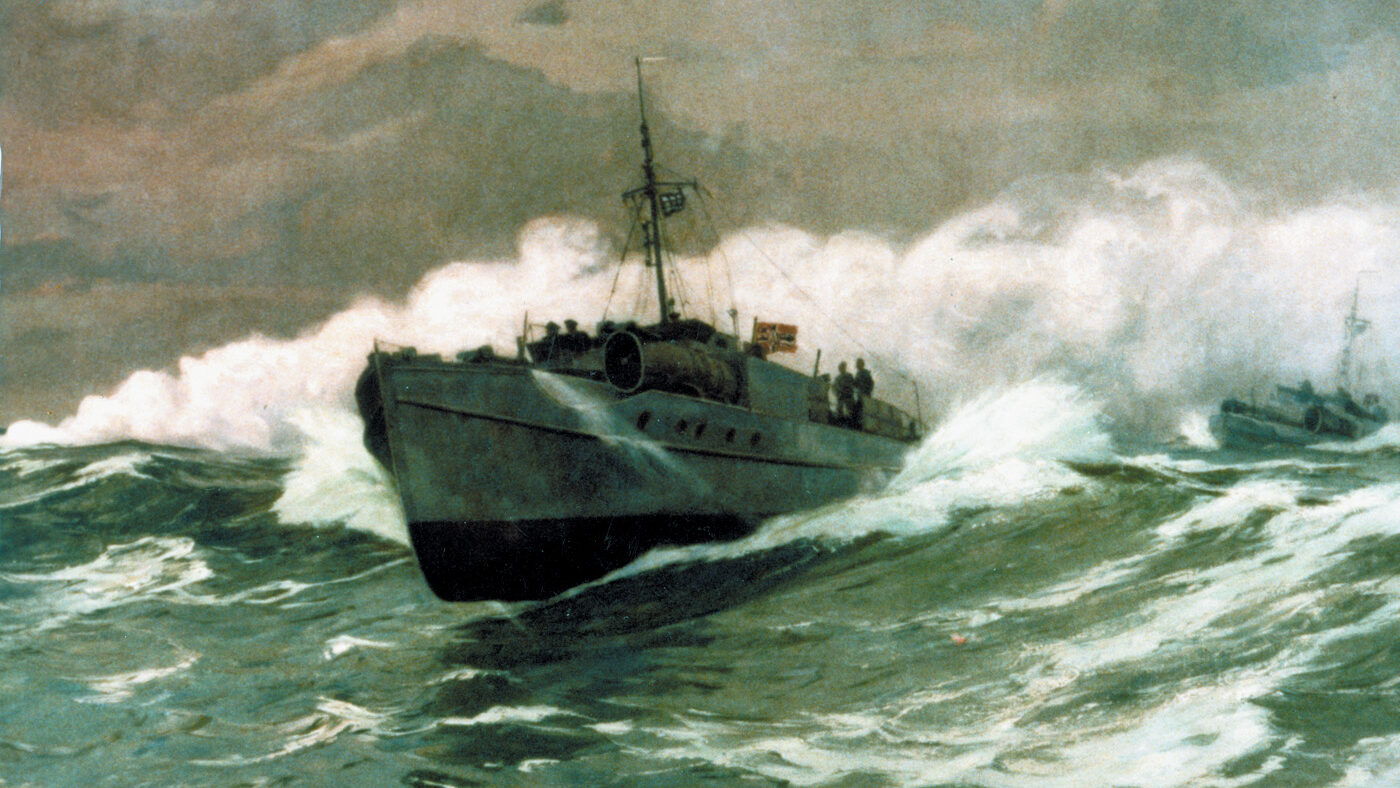
Exercise Tiger: Deadly D-Day Rehearsal
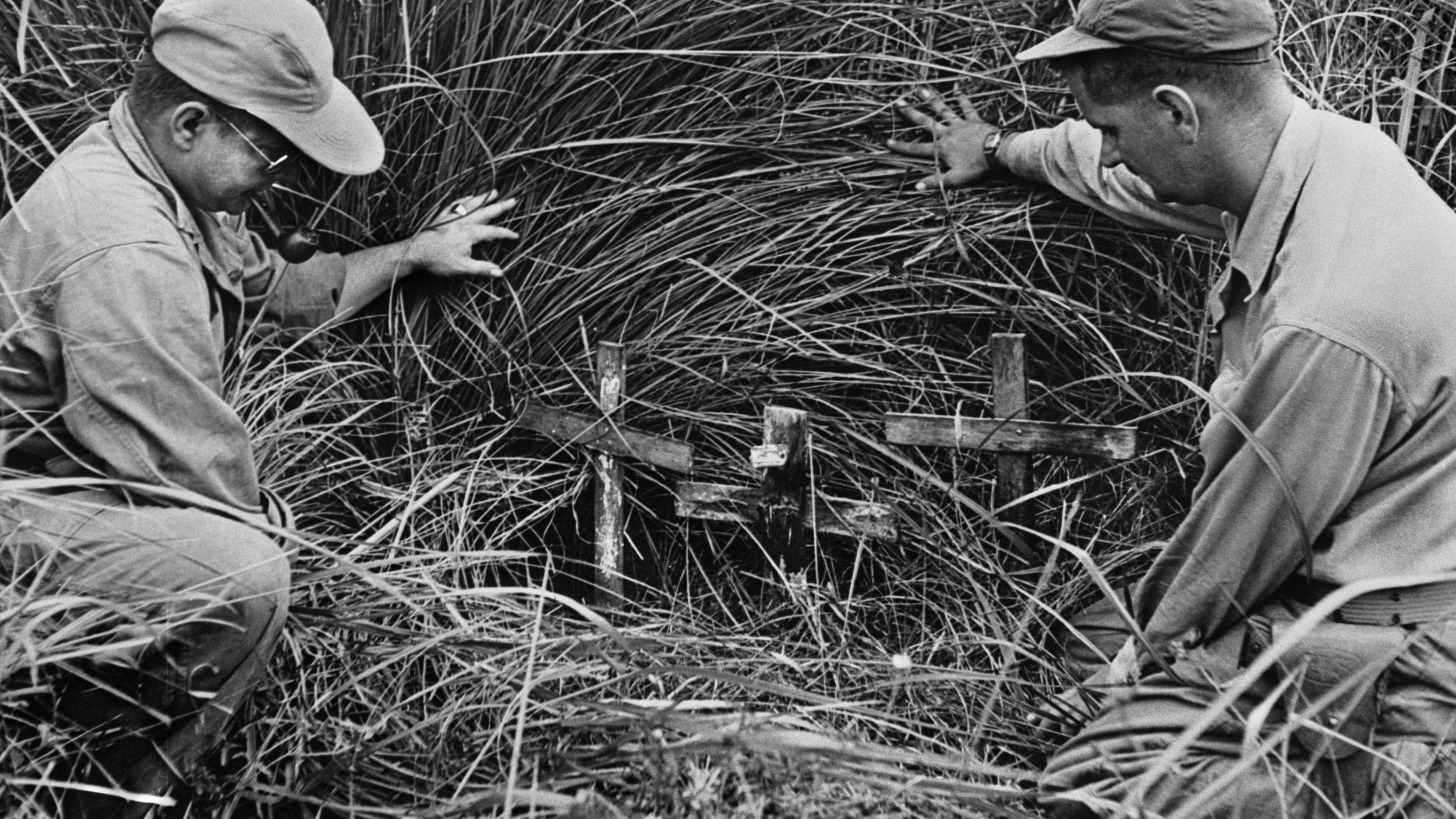
Deaths in WWII: Casualties, and the Graves Registration Units
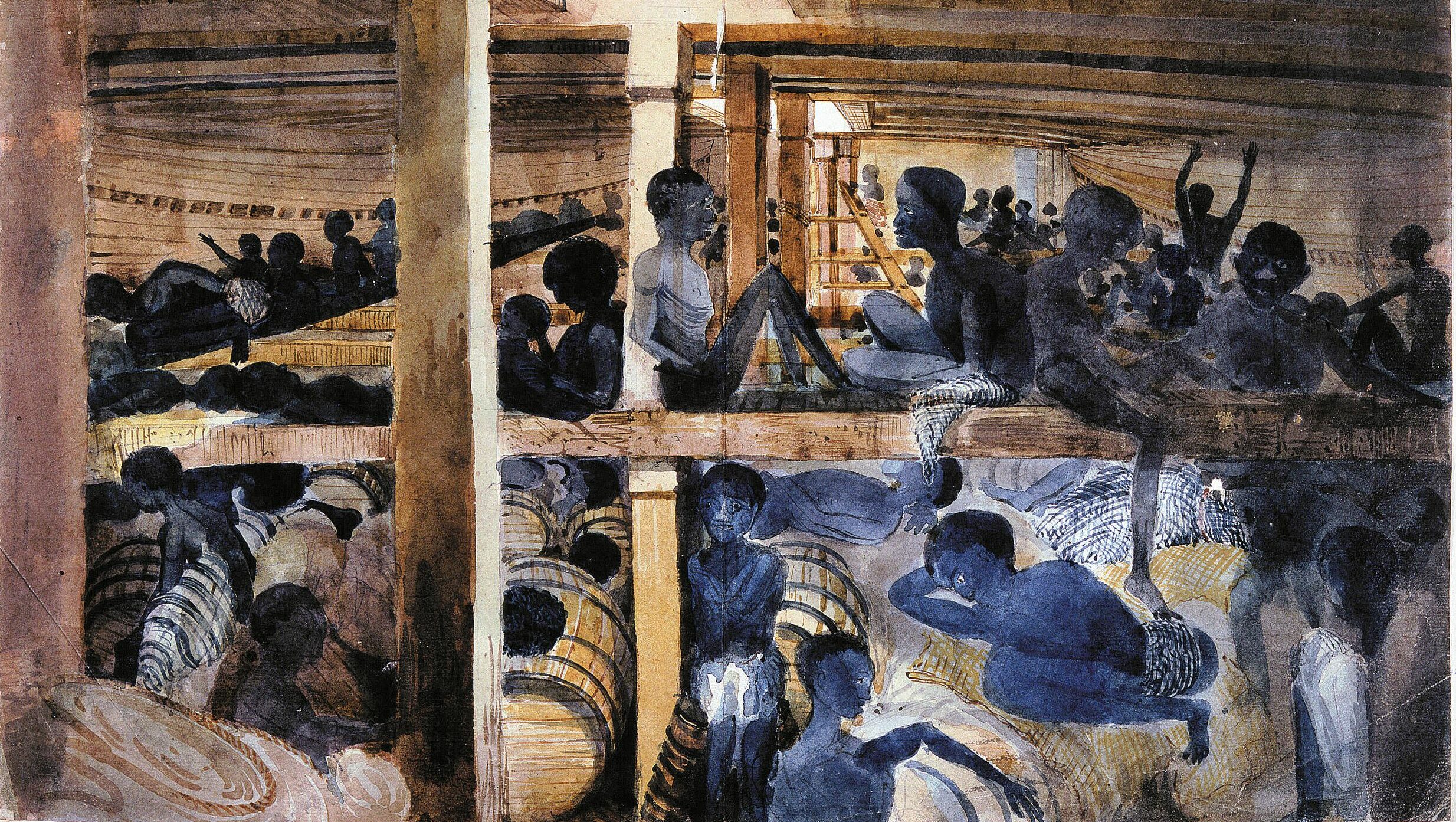
Africa Squadron
Steals & Deals: Up to 81% off Omaha steaks, Bluetooth speakers, more
- TODAY Plaza
- Share this —

- Watch Full Episodes
- Read With Jenna
- Inspirational
- Relationships
- TODAY Table
- Newsletters
- Start TODAY
- Shop TODAY Awards
- Citi Concert Series
- Listen All Day
Follow today
More Brands
- On The Show
Visiting the Maginot Line: Relic of World War II
In the 1930s the Maginot Line was viewed as a military marvel, an impregnable network of underground fortifications stretching along France's border with Germany — from Belgium to Switzerland — designed to stop the Nazi onslaught and prevent a repeat of the bloody trench warfare of World War I.
But then in 1940, the Germans simply bypassed the vast, hugely expensive network of bastions, bunkers, tunnels and artillery batteries, and the Maginot Line turned into a metaphor for exaggerated military confidence resulting in disaster.
History buffs and military enthusiasts from around the world now come to tour some of the amazing subterranean forts which began reopening for visitors in the 1980s. Guided tours, including rides on electric trains that once ferried troops and ammunition from fort to fort through tunnel networks, are available from April to October.
Their massive concrete construction helped preserve the fortresses, which still stand guard along the frontier as though frozen in time. Visitors say the sites, often located in mountainous terrain far from urban centers and not marked on road signs, can be hard to find but are worth the effort.
"A lot of people have heard something about it, and they're interested in finding out more, discovering what exactly was this thing called the Maginot Line," said Armand Jacques, a guide at the fort of Schoenenbourg, located about 34 miles north of the French city of Strasbourg.
Jacques said about 40,000 people a year take the guided tour of the fort, with Germans accounting for about 40 percent of visitors. He cautioned that visitors need to be dressed warmly, since the underground tunnels and casemates are not heated and average temperatures hover around 54 degrees even in midsummer.
The bastions were largely abandoned after World War II, although some of the more extensive ones — known as "gros ouvrages," literally "large works" — were used by the French army during the Cold War as bombproof shelters and headquarters.
They too were relinquished by the mid-1960s, with some sections auctioned off to the public and the rest left to decay — after the army had welded shut entryways in order to prevent adventurous tourists or curious children from injuring themselves.
Although France was one of the victors of WWI, its military had suffered more than 6 million casualties while fighting in the dangerously exposed trenches along the Western Front. The Maginot Line — named after Andre Maginot, the defense minister who initiated its construction — was intended to act as a deterrent, as well as protect the vulnerable 200-mile border from another German invasion.
"Strategically, the Maginot Line's legacy is mixed," wrote William Allcorn, an expert on fortifications and author of the monograph "The Maginot Line 1928-45."
"It effectively protected the borders it was supposed to protect ... but the myth of the Maginot Line engendered a false sense of security and complacency on the part of the French."
Unfortunately, the Maginot Line failed to prevent France's crushing defeat in May 1940, when the invading Nazis simply bypassed it by breaking through Belgian defenses in the north and trapping the hapless French, British and Belgian armies. The Germans later turned on the line and captured it from the rear, taking more than 500,000 prisoners.
Although not technically part of the Maginot Line, a similar line of fortifications was built along France's border with Italy from the Swiss Alps all the way down to the Mediterranean Sea. Set amid the breathtaking Alpine landscape, several of those forts also are open to the public. One of the most impressive bastions along that section is Fort Saint-Agnes, spectacularly situated overlooking the seaside town of Menton.
Joseph Richter and his brother Kurt, military history buffs from the German town of Ulm, were riding mountain bikes around the hilly, heavily forested area surrounding Hackenberg, largest of the Maginot forts in northeastern France.
"This is the highlight of our exploration of WWII fortifications, including the (Nazi-built) Siegfried Line and the Atlantic Wall," Richter said.
Tourist groups usually arrive by bus from Strasbourg or from other nearby towns. The two-hour tours take in some of the vast underground areas, including the subterranean railway, messes and sleeping quarters for hundreds of troops, and at least one of the combat blocks with its preserved gun emplacements.
A tour of the sprawling Hackenburg facility near the industrial city of Thionville included an ammunitions dump, the power installations, the barracks, the museum of uniforms and weapons, as well as a train ride to one of the artillery turrets.
"I always thought of the Maginot Line as being synonymous with military folly, but never expected the fortifications to be so immense and impressive," said Dragan Blagojevic, a visitor from Serbia, after trekking through the Hackenberg tunnels.
If You Go...
VISITING THE MAGINOT LINE: Between April and October, the forts are open in the afternoon on weekdays and all day on Sundays. But it is best to check in advance, as the tours are run by volunteers and opening hours can be irregular. Entrance fees vary, but are around $10 (7 euros) for adults and $5-7 (4-5 euros) for children. The fortress of Schoenenbourg's extensive Web site at http://www.lignemaginot.com offers complete data for the fort and the nearby casemate of Esch. For information on "gros ouvrage" of Hackenberg, the largest Maginot fort, visit http://www.maginot-hackenberg.com .

Maginot Line
The Maginot Line in Alsace is a network of fortifications built in the 1930s to protect the border with Germany. It comprises a series of bunkers, casemates and underground galleries equipped with cannons and machine guns. With Bonjour Alsace, visit some of these structures open to the public as museums and historic sites, offering visitors a fascinating insight into the region's military history.

Pass'Alsace : visit Alsace from north to south

Maginot Line "Fort de Schoenenbourg" entrance ticket

Guided tour in the Maginot Line fortress "Four-à-Chaux"
Which maginot line structures are open to the public in alsace, in alsace, two maginot line structures are open to the public: fort de schoenenbourg and four à chaux. fort de schoenenbourg, located in hunspach, is one of the most emblematic structures of the maginot line. built between 1930 and 1935, it is now open to visitors, who can explore its underground galleries, casemates and combat turrets. the lime kiln, located in lembach, is also open to the public. this structure was used to produce lime for the construction of the maginot line. today, it houses a museum retracing the history of the maginot line and fortification in alsace. these two structures offer visitors a unique opportunity to immerse themselves in the region's military history, and to understand the crucial role played by the maginot line during the second world war. guided tours and exhibitions reveal the daily lives of soldiers and the ingenuity of the military architecture of the period., what kind of activities and tours are on offer at maginot line sites in alsace, the maginot line sites in alsace offer visitors a variety of interesting activities and tours. guided tours with explanations are organized regularly to enable visitors to discover the history and operation of the military works. qualified guides provide detailed information on fortifications, armaments and the daily lives of the soldiers who lived there. in addition to guided tours, some maginot line sites take part in the "nuit des musées", a cultural event held once a year. on this special evening, the sites are open in the evening, offering a unique experience to visitors who can discover the sites in a different atmosphere, illuminated by special lights. some of these facilities also have permanent or temporary exhibitions to deepen understanding of the historical and military context of the maginot line in alsace. these activities allow visitors to immerse themselves in the history of the maginot line, appreciate the ingenuity of the military constructions of the time and pay tribute to the soldiers who served in these defensive works., are tours for the whole family, visits to maginot line sites in alsace are generally suitable for the whole family. however, it's important to note that the underground works can be cool, with a constant temperature of around 13 degrees celsius below the surface. visitors are therefore advised to dress appropriately in warm clothing, especially if the tour takes place in the cooler months. guided tours are often organized to appeal to visitors of all ages, from the very young to the very old. guides and explanations are adapted to make the history of the maginot line accessible and captivating for all. however, it is always advisable to check the age restrictions and specific recommendations for each site, as some parts of the works may require mobility or may not be suitable for very young children. all in all, a visit to the maginot line sites in alsace offers a unique opportunity to learn and discover the region's military history as a family., what do we see on the tour, on a tour of the maginot line sites in alsace, visitors can observe a wide range of features that bear witness to the region's military history. they can discover the barracks, with its sanitary facilities, kitchen and infirmary, where soldiers were housed and provided with their daily needs. the tour also includes the power plant, which provided the energy needed to operate the underground works. visitors will have the opportunity to explore the main gallery and see the secret emergency exit, which served as an escape route in case of need. a highlight of the tour is the discovery of the command post, which was the nerve center of the works, where officers made strategic decisions and coordinated operations. visitors can also admire a combat block with its impressive gun turret, testifying to the firepower of the works. last but not least, various thematic exhibitions are often on offer to deepen visitors' understanding of the maginot line and its role in the region's history. these tours allow visitors to plunge into the past and better understand the importance of these fortified works in defending the territory..
Official website
of tourist site in Alsace
Best prices
Free of charge and surcharge
Activities tested
By our advisors
100% secure - 3DS2
Ideas for activities and good deals in Alsace.
Reservations
How does my reservation work?
How do I cancel my reservation?
Frequently asked questions
Working with us
Suggest an activity
Reselling activities
Bonjour Alsace
Blog Bonjour Alsace
+33 (0)3 67 10 43 65 (toll-free call)
Monday to Friday, 9am to 12pm / 1pm to 5pm or
contact us via our contact form
Bonjour Alsace is the official partner of the main tourist sites in Alsace. Book the best activities in Alsace directly online and receive your e-tickets to share unforgettable memories with your loved ones.
See all things to do in Alsace
Terms and conditions of sale
Privacy policy
Terms of use
Greencub communication agency


Hiking through Alsace : Trail on the Maginot Line
- 3 days / 2 nights
- Intermediate
With this hike (71 km) you will become acquainted with the history of the Maginot line in north Alsace. There is some buildings on the tour.
- Pets allowed : yes
- Type of hiking trail : path
- IGN Map : 3713 ET, 3814 ET, E5 à C2
- Sentier de la Ligne Maginot
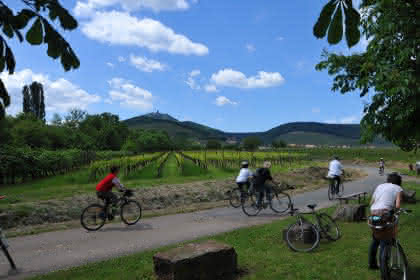
slowUp Alsace
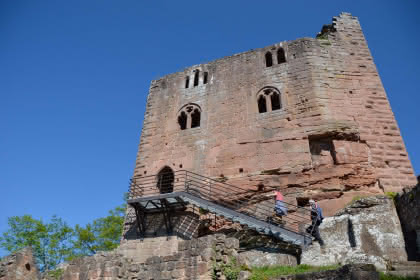
Castle New-Windstein
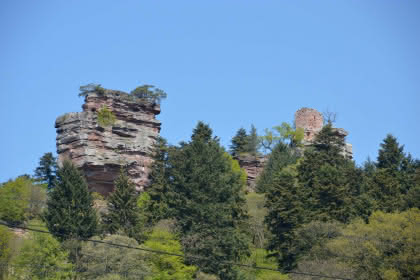
Castle Old-Windstein
Casemate of Neunhoffen
- Share on Facebook
- Share on Twitter
- Share on Linkedin
- Share on Mail
Fields marked with an asterisk are required. Without this information, we will be unable to respond to your request. Alsace Destination Tourisme will process your personal data in accordance with the relevant legislation and our data protection policy for customers, partners and prospective customers which you can access here .
Your message has been successfully sent!

IMAGES
VIDEO
COMMENTS
The fort at Schoenenbourg, the most important Maginot Line fortification in Alsace, is listed on the National Register of Historic Places. It comprises 8 blocks for 650 men. You can tour the barracks, the kitchens, the command post, the generating plant, see gun positions, retractable gun turrets, magazines for the ammunition.
Made up of 58 structures, the Maginot Line is a line of fortifications built by France between 1929 and 1940 along its 750 kilometres of borders from Belgium to Italy, crossing areas including Alsace from north to south for nearly 200 kilometres. Built to counter foreign military invasions, it consists of many concrete blocks topped with domes or metal gun turrets.
In its function, the Maginot Line was actually serving its function, but it was also hit at a surprised and weak spot coupled with disastrous problems in Allied command. The Magino Line was made up of 58 structures and was built between 1929 and 1940. Length: 750 Kilometers From Belgium to Italy (Strongest In Alsace and Lorraine) Structures: 58 ...
The Four à Chaux fortress - Maginot Line Lembach. Memorial Museum of the Rhine Maginot Line Marckolsheim. Maginot line - Ancienne Redoute Drusenheim. The Bunker "Heidenbuckel" Leutenheim. Shelter Museum Hatten. Casemate Esch Hatten. Casemate of Neunhoffen Dambach. Casemate Rieffel Oberroedern. Easy
The place is maintained by the Friends of Maginot Line association, and it's quite amazing. You enter in a bunker from World War 2, something like 30 meters below ground level. You can see all the facilities, how they managed to carry equipments inside the bunker line, huge shells of cannons, and lots more. I would definitely recommend the visit.
The Schoenenbourg Fort during the Second World War. For military history enthusiasts, this fort of the Maginot Line is very important from a historical point of view. In June 1940, it was attacked not only by German artillery but also by the Luftwaffe (the air force of Nazi Germany), making it the most bombed construction on the Maginot Line.
The Maginot Line (French: Ligne Maginot, IPA: [liɲ maʒino]), named after the French Minister of War André Maginot, is a line of concrete fortifications, obstacles and weapon installations built by France in the 1930s to deter invasion by Nazi Germany and force them to move around the fortifications. It was impervious to most forms of attack; consequently, the Germans invaded through the Low ...
As part of the European Heritage Days. Built between 1930 and 1935, the Four-à-Chaux is one of the major sites of the Maginot Line in Alsace. This imposing mountain fortress, located on a limestone hill to the south of the town of Lembach, has around 5km of underground galleries and covers an area of 26ha. It housed 580 soldiers and has the ...
The Schoenenbourg Fort is the most important Maginot Line fortification in Alsace, France. The fort has been open to the public since 1978. The barracks and kitchens, the command post, gun positions and other former locations can be visited. The museum presents documents on the history of the Maginot Line and on military life in a fort.
ASSOCIATION DES AMIS DE LA LIGNE MAGINOT D'ALSACE. 3, route de Hoffen - 67250 HUNSPACH. Tél : (0033) 3 88 80 96 19 Tél : (0033) 3 88 80 41 46 Internet : www.lignemaginot.com e-mail : [email protected]. - Map of access to the fortress Schoenenbourg.
The visit was safe and we had a really nice guide, passionate about the place, that described in details the history of the place and answered all our questions. We appreciated the visit and we strongly recommend. ... The fact that the Maginot line was used into the 1950's as part of the cold war defence was also news to me. A great piece of ...
August 19, 2021. After an afternoon spent visiting the historic sites of Verdun, our second day trip from Metz was a visit to the underground bunker Hackenberg, which was built as a fortification on the Maginot Line of defense roughly twelve years after WWI. Ouvrage Hackenberg is a 45-minute drive northeast of Metz, just 20km from the French ...
Maginot Line. Updated: October 4, 2022 | Original: October 29, 2009. The Maginot Line, an array of defenses that France built along its border with Germany in the 1930s, was designed to prevent an ...
The serpent, constructed over a period of 11 years at a cost of some seven billion prewar francs, was France's last, best hope to avert another German invasion, another devastating war. The serpent is the largest remaining artifact from World War II. It is the Maginot Line. Considered by many to be an expensive failure, a symbol of French ...
VISITING THE MAGINOT LINE: Between April and October, the forts are open in the afternoon on weekdays and all day on Sundays. But it is best to check in advance, as the tours are run by volunteers ...
A gripping, immersive experience revisiting history! Designed to defend the Valley of the Sauer, the fortress of the Four à Chaux was built on high ground dominating the village of Lembach. The name comes from a lime kiln that was on the site. The 5km of galleries are 30m below the surface. The garrison was made up of 24 officers and 600 men.
The Maginot Line in Alsace is a network of fortifications built in the 1930s to protect the border with Germany. It comprises a series of bunkers, casemates and underground galleries equipped with cannons and machine guns. With Bonjour Alsace, visit some of these structures open to the public as museums and historic sites, offering visitors a fascinating insight into the region's military history.
The Maginot Line was also revived during the Cold War in anticipation of possible Soviet advance. In a maximum group size of 50 people, your professional guide will talk you through the history of this part of the Maginot Lines. Explore a typical Maginot Line fortification. Learn about the role of the Ouvrage Michelsberg in the Cold War and WW2.
We continue with our look at the classic Maginot Line locations with a visit to Ouvrage Immerhof. Sited in the Thionville sector, it was built in the early 1930s with an extensive system of infantry and combat bunkers. In an excellent state of preservation we spend the morning visiting the whole site, with 90 minute guided tour and also seeing ...
Maginot Line, elaborate defensive barrier in northeast France constructed in the 1930s and named after its principal creator, André Maginot, who was France's minister of war in 1929-31.. The fact that certain modern fortresses had held out against German artillery during World War I, as well as the admitted saving in military manpower, induced France to build the celebrated Maginot Line ...
Musée Mémorial de la Ligne Maginot du Rhin. Route du Rhin. 67390 Marckolsheim. Call us Contact us by e-mail. Description. " Return to June 1940 and experience the daily life of the soldiers in this small casemate. Feel the atmosphere of the era: firing chambers, bunks, the command post, the Sherman Hartmannswillerkopf tank and more. Located ...
Can't say there's a best because there are Maginot line forts all over. We have Fort de Schoenenbourg marked to visit on an upcoming trip. Many of the forts are off by themselves in fields so a rental vehicle would be best to get to them. There are also a number of WWI forts at Verdun with tunnels and reconstructed trenches. This topic has ...
67110 Dambach. Call us Contact us by e-mail. Description. With this hike (71 km) you will become acquainted with the history of the Maginot line in north Alsace. There is some buildings on the tour. Pets allowed : yes. Additional information. Type of hiking trail : path. IGN Map : 3713 ET, 3814 ET, E5 à C2.